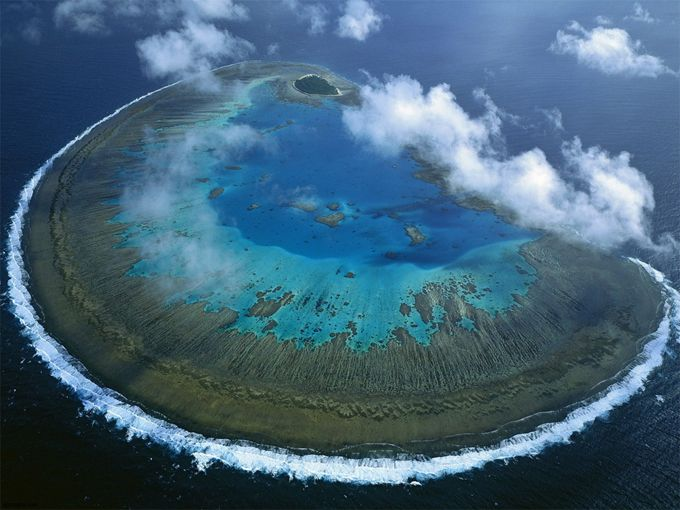The post Australia’s Adventure Tourism Market Set for Explosive Growth by 2031 appeared first on TheAussieway.
]]>With travellers seeking unique and off-the-beaten-path adventures, Australia adventure tourism has evolved beyond traditional sightseeing. From deep-sea diving in the Great Barrier Reef to skydiving over the Whitsundays, the industry offers a wide range of experiences catering to all levels of thrill-seekers. This article explores key industry trends, market segments, economic impact, and the future outlook of adventure tourism in Australia.
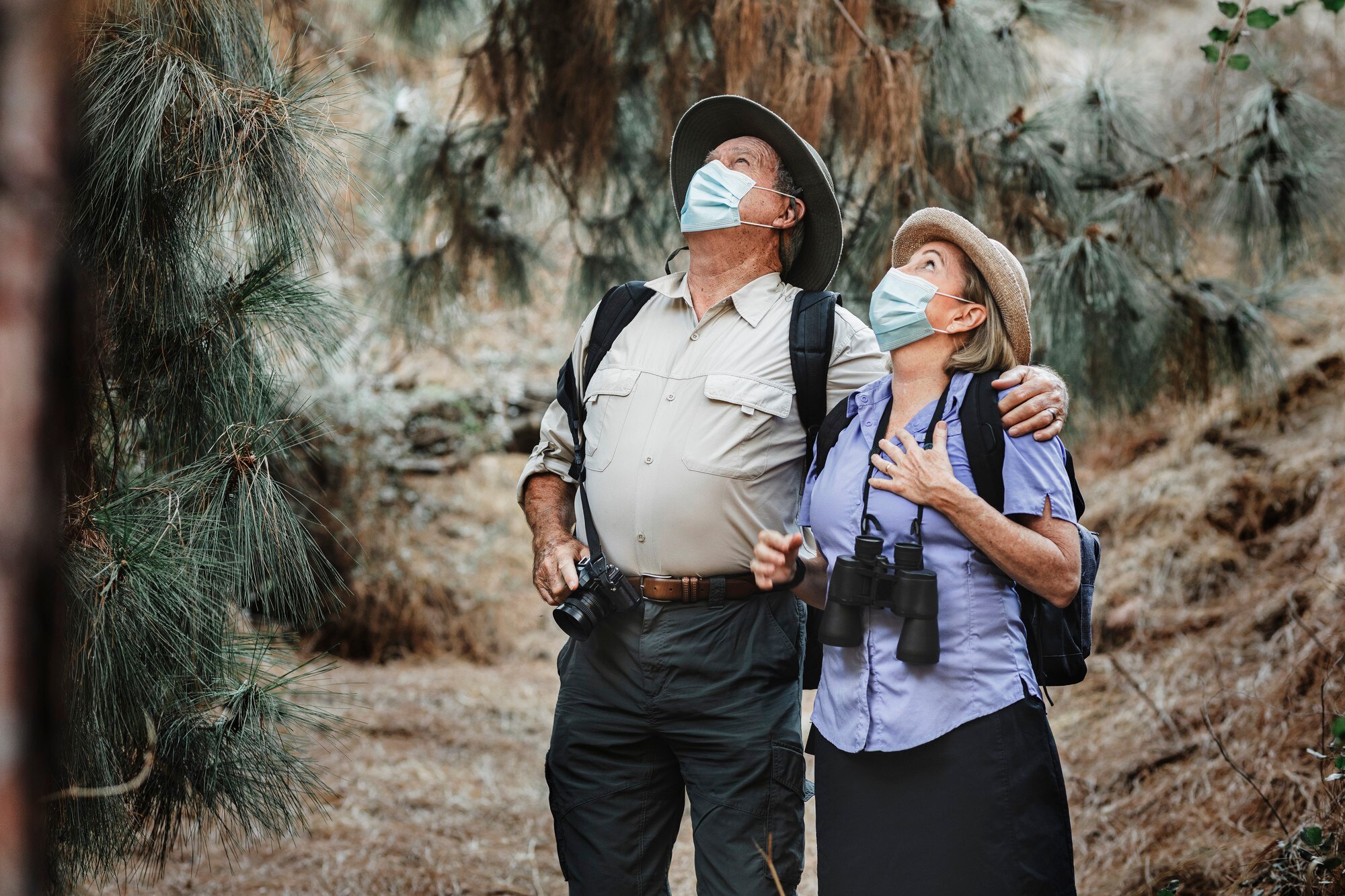
Rising Preference for Adventure and Outdoor Activities
Globally, adventure tourism has seen an unprecedented boom as travellers move away from conventional vacations in favor of action-packed and immersive outdoor experiences. Activities such as hiking, rock climbing, white-water rafting, and wildlife safaris have become increasingly popular among both domestic and international visitors.
Australia, with its stunning and diverse natural landscapes, is uniquely positioned to cater to this growing demand. The country’s vast coastline, dense rainforests, rugged outback, and mountain ranges provide countless opportunities for adventure travelers. Some of the most sought-after outdoor experiences Australia has to offer include:
- The Great Barrier Reef – One of the world’s top diving destinations, offering unforgettable scuba diving and snorkeling experiences among vibrant coral reefs.
- The Blue Mountains – A paradise for rock climbers, abseilers, and bushwalkers seeking breathtaking views and challenging terrain.
- Uluru and the Outback – A destination that combines adventure with Indigenous cultural immersion, where travelers can trek across stunning desert landscapes.
- Tasmanian Wilderness – A haven for hikers and kayakers, offering untouched natural beauty and incredible wildlife encounters.
As adventure travel trends shift towards authentic, experience-driven journeys, Australia continues to attract adventure enthusiasts looking for a perfect blend of excitement and nature.
COVID-19 and the Resurgence of Adventure Tourism
The COVID-19 pandemic had a severe impact on global tourism, with travel restrictions, lockdowns, and safety concerns putting a halt to international travel. The adventure tourism market in Australia also faced challenges, with major destinations experiencing a significant drop in visitors. However, the post-pandemic recovery has been swift, driven largely by domestic tourism.
Australians have rediscovered their own country, opting for road trips, camping, and outdoor adventures in place of overseas travel. This shift has led to a boom in demand for domestic adventure tourism, benefiting local businesses and operators. Additionally, the easing of travel restrictions has once again opened Australia’s borders to international tourists eager to experience the country’s natural wonders.
Some key post-pandemic trends shaping the Australian tourism industry growth include:
- Increased Interest in Nature-Based Travel – Tourists are prioritizing outdoor and adventure experiences over crowded urban destinations.
- Small-Group and Private Tours – To maintain social distancing and personalized experiences, travelers prefer smaller, more exclusive adventure tours.
- Self-Guided Adventures – Activities such as camping, hiking, and road trips have surged as travelers seek flexible and independent itineraries.
- Sustainable and Eco-Conscious Travel – Travelers are becoming more mindful of their environmental impact, leading to a rise in demand for sustainable and ethical adventure tourism.
The Role of Eco-Tourism in Adventure Travel
As environmental awareness grows, eco-tourism in Australia has become a fundamental part of the adventure tourism industry. More travelers are actively seeking sustainable travel experiences that promote conservation and respect for local ecosystems.
Australia is home to a wealth of eco-friendly adventure destinations, such as:
- Daintree Rainforest, Queensland – One of the world’s oldest rainforests, offering guided eco-tours that educate visitors on biodiversity and Indigenous culture.
- Kangaroo Island, South Australia – A haven for nature lovers, featuring wildlife sanctuaries, conservation parks, and sustainable eco-lodges.
- Rottnest Island, Western Australia – A car-free island that encourages cycling, snorkeling, and wildlife encounters, all within a protected environment.
Many adventure tour operators are adopting eco-friendly practices, including carbon-neutral travel options, sustainable accommodations, and ethical wildlife tourism. The focus on conservation and responsible tourism ensures that Australia remains a top destination for adventure travelers while preserving its natural beauty for future generations.
Market Segmentation and Demand for Activities
Domestic Tourism
Domestic adventure tourism has witnessed a substantial uptick, with Australians increasingly embracing thrilling outdoor activities. This growing trend has been driven by a combination of factors, including an increased focus on active lifestyles, improved accessibility to adventure destinations, and the influence of social media showcasing Australia’s stunning landscapes. Popular destinations for adventure tourism include:
- Blue Mountains: A prime location for rock climbing, abseiling, and canyoning. With dramatic sandstone cliffs and deep gorges, the region offers a world-class adventure experience that continues to attract climbing enthusiasts.
- Gold Coast: Famous for its surf-friendly beaches, the Gold Coast is a haven for surfers of all levels. The combination of warm waters, consistent waves, and a vibrant coastal culture makes it a top pick for domestic tourists.
- Kimberley Region: This remote wilderness offers an authentic outback experience, with 4WD expeditions, river cruises, and cultural experiences led by Indigenous guides. The demand for these immersive experiences has grown as travelers seek more meaningful connections with the land.
In addition to these iconic locations, road trips, 4WD expeditions, and camping experiences have surged in popularity. Families, solo travelers, and groups are increasingly opting for self-drive adventures, which allow for flexibility and deeper exploration of Australia’s diverse landscapes. According to Australian travel statistics, domestic travel numbers have steadily increased post-pandemic, reflecting a strong desire for local exploration.
International Tourism
Australia remains a premier destination for international travellers seeking adventure, with its unique blend of coastal, desert, and rainforest environments. Visitors from major markets, including the US, UK, Germany, Japan, and China, continue to be drawn to the country’s unparalleled outdoor offerings. Some of the most sought-after adventure destinations include:
- Great Ocean Road: This iconic coastal route offers breathtaking scenery and adrenaline-fueled activities such as surfing, hiking, and skydiving over the Twelve Apostles.
- Kakadu National Park: A UNESCO World Heritage-listed site, Kakadu offers an extraordinary mix of adventure and cultural heritage. Activities such as crocodile spotting, billabong cruises, and rock art exploration make it a must-visit for thrill-seekers and history enthusiasts alike.
- Fraser Island: The world’s largest sand island presents a range of adventure opportunities, from 4WD beach drives and camping to snorkeling in pristine freshwater lakes.
With the global adventure travel market projected to expand significantly, adventure travel in 2031 is expected to see increased international participation in Australia’s adventure tourism sector. Growth in this area is likely to be driven by factors such as enhanced connectivity, targeted marketing campaigns, and innovations in sustainable tourism practices.
Niche Sectors
The rise of eco-conscious travel has led to the expansion of niche sectors within adventure tourism. More travellers are prioritizing sustainability, seeking out experiences that minimize environmental impact while maximizing cultural immersion. Three key areas leading this shift include:
- Eco-tourism: With growing awareness of climate change, travellers are opting for eco-friendly accommodations, carbon-neutral activities, and responsible wildlife encounters. Resorts and tour operators are adapting by implementing sustainable practices such as solar energy usage, waste reduction programs, and locally sourced materials.
- Indigenous Cultural Tours: These immersive experiences offer visitors a deeper understanding of Australia’s rich heritage. Led by Indigenous guides, these tours often include storytelling, bush tucker experiences, and traditional crafts, providing a unique perspective on the land.
- Conservation-based Adventures: Many adventure travellers now seek to contribute positively to the destinations they visit. Activities such as marine conservation dives, wildlife monitoring, and reforestation initiatives allow tourists to combine adventure with environmental stewardship.
According to eco-friendly travel trends, the demand for sustainable tourism options is set to increase, pushing businesses to adapt their offerings to align with environmental and ethical considerations.
Economic Impact of Adventure Tourism
Revenue Generation and Job Creation
Adventure tourism plays a crucial role in Australia’s economy, generating billions of dollars annually through direct spending on travel, accommodation, guided tours, and outdoor activities. This impact extends beyond tourism operators, benefitting associated industries such as:
- Retail: The demand for adventure gear, such as hiking boots, camping equipment, and surfboards, has surged in response to the growing adventure tourism sector.
- Hospitality: Hotels, lodges, and restaurants in adventure hotspots have seen a steady increase in bookings, particularly in regional areas.
- Transportation: With more travelers seeking remote and off-the-beaten-path destinations, car rentals, domestic flights, and public transport systems have all experienced heightened demand.
A recent adventure tourism market report highlighted that adventure travel is one of the fastest-growing segments within the global tourism industry, with Australia standing out as a top performer. This trend translates into thousands of employment opportunities, particularly in rural and regional areas where tourism serves as a key economic driver.
Government Investments in Infrastructure
Recognizing the economic and social value of adventure tourism, both local and federal governments are prioritizing infrastructure investments to enhance visitor experiences. These projects include:
- Improved Hiking Trails: Authorities are expanding and maintaining national park trails to accommodate increased foot traffic and ensure safety.
- Adventure Parks: More adventure parks featuring activities like zip-lining, rock climbing walls, and obstacle courses are being developed to cater to families and adventure enthusiasts.
- Expanded Transportation Networks: Investments in better roads, shuttle services, and regional flight connections make it easier for travelers to access remote adventure destinations.
- Eco-Lodges: Sustainable accommodation options, such as off-grid cabins and luxury eco-resorts, are being developed to meet the demand for responsible tourism.
As outlined in adventure tourism insights, these strategic developments aim to position Australia as a leader in the global adventure tourism landscape while ensuring sustainability and long-term economic benefits.
Regional Insights and Future Outlook
Key Adventure Hubs
Certain regions in Australia stand out as adventure tourism hotspots:
- New South Wales: Home to the Blue Mountains, offering rock climbing, hiking, and canyoning adventures.
- Queensland: The Great Barrier Reef and the Gold Coast provide top-tier diving, snorkeling, and surfing experiences.
- Tasmania: A hub for wilderness adventures, featuring pristine hiking trails and remote eco-tourism experiences.
- The Outback: Ideal for rugged explorations, 4WD tours, and indigenous cultural tourism.

Future Market Growth
The outlook for Australia’s adventure tourism market remains overwhelmingly positive. Continued investment in sustainable tourism, infrastructure, and innovative adventure experiences will further cement Australia’s status as a global leader in this sector. Advances in technology, such as AI-driven travel planning, virtual reality previews of destinations, and enhanced safety equipment, are expected to make adventure tourism more accessible and appealing to a wider audience. Moreover, tourism market growth Australia is projected to benefit from shifting traveler preferences toward experiential and adventure-based trips, with a focus on unique, nature-driven experiences.
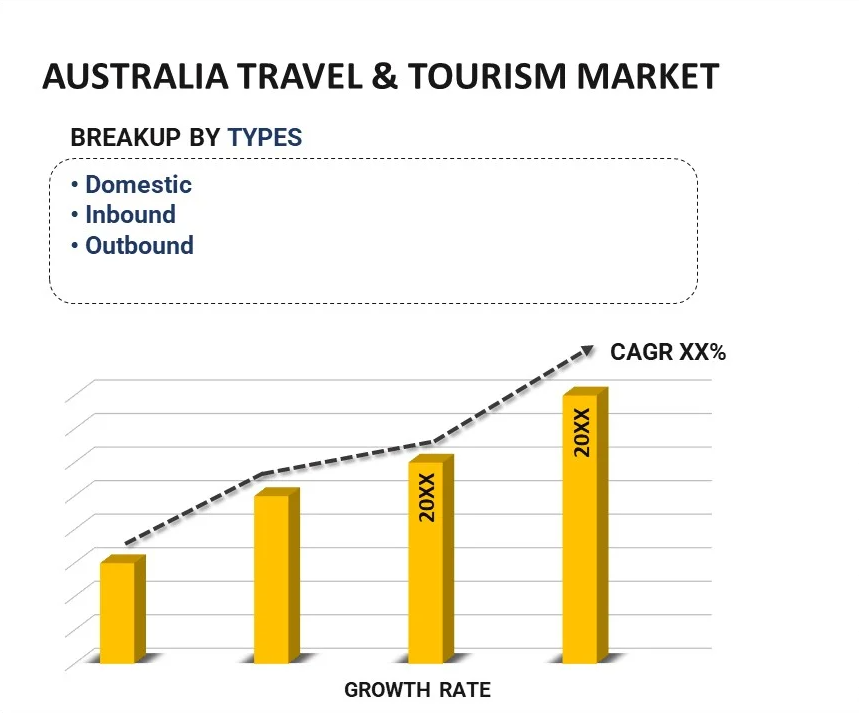
Australia’s adventure tourism industry is experiencing exponential growth, driven by rising demand for outdoor experiences, sustainability efforts, and government investments. This trend is further reinforced by the steady expansion of the Australia travel economy, which continues to generate jobs, increase visitor spending, and support regional development. As the market continues to expand, innovation and responsible tourism practices will be key to sustaining this momentum. With a promising future ahead, Australia is poised to remain one of the world’s premier adventure tourism destinations through 2031 and beyond.
The post Australia’s Adventure Tourism Market Set for Explosive Growth by 2031 appeared first on TheAussieway.
]]>The post Bridging the Gap: Can Skilled Migration Solve Australia’s Workforce Crisis? appeared first on TheAussieway.
]]>This alarming shortfall has led to calls for significant reforms in applying for an Australian skilled immigration visa to attract international talent and fill critical gaps. Without immediate intervention, the country risks stalling its economic progress and failing to meet crucial development targets.
Overview of Australia’s Skilled Labor Shortage
While labor shortages exist across various industries, the most urgent challenges are concentrated in fields that require specialized technical expertise. The demand for highly skilled professionals has surged due to factors such as an aging workforce, increased infrastructure projects, and rapid technological advancements.

Industries Most Affected
- Construction: With the Australian government setting ambitious housing targets, a lack of skilled tradespeople, including electricians, plumbers, and carpenters, is causing severe project delays and increased costs. The omission of key construction roles, such as crane, bulldozer, and excavator operators, from the priority skilled migration list has exacerbated labor shortages.
- Healthcare: The aging population is driving demand for medical professionals, yet the country faces a shortage of doctors, nurses, and aged care workers.
- Technology: Rapid advancements in artificial intelligence, cybersecurity, and data science have outpaced local workforce capabilities, creating significant talent shortages.
Economic Impact of Labor Shortages
The shortage of skilled workers is not just an industry problem—it has broader economic consequences. Limited workforce availability:
- Reduces productivity and slows business growth.
- Increases wages due to high competition for skilled labor.
- Drives up the cost of housing and infrastructure projects.
In response, policymakers are turning to skilled migration as a solution to bridge the workforce gap.
Role of Skilled Migration in Workforce Development
Australia’s skilled migration program has historically been a key driver of economic growth. To address the current labor crisis, the government has introduced changes to skilled visa Australia requirements that make it easier for overseas workers to contribute to the economy.
Recent Changes in Skilled Migration Policies
- 189 visa Australia requirements: This visa category allows highly skilled individuals to migrate independently without employer sponsorship, making it attractive for professionals in fields such as engineering and IT.
- 190 visa requirements: Aimed at filling specific labor shortages in different states, this Australian skilled work visa requires state nomination and offers a pathway to permanent residency.
- Simplified Processes: There have been calls to streamline visa application procedures and reduce English language proficiency requirements to attract more skilled workers.
- Increased Migration Intake: In September 2022, the Australian government raised the permanent migration cap from 160,000 to a record 195,000 per year to alleviate workforce shortages.
- Net Overseas Migration Surge: Net overseas migration reached 650,000 over 2022–2023 and 2023–2024, the highest in Australian history.
How Visa Reforms Impact the Availability of Skilled Workers
Reforms in visa policies have led to increased interest from international job seekers, but challenges remain. Industry experts suggest that reducing red tape and improving credential recognition processes can further enhance the effectiveness of skilled migration programs.
Challenges and Considerations
Despite the benefits, skilled migration comes with hurdles that must be addressed to ensure long-term success.
Barriers Faced by Skilled Migrants
- Visa Processing Delays: Extended processing times can discourage skilled professionals from choosing Australia over competing destinations.
- Qualification Recognition: Many skilled migrants struggle to have their international credentials recognized, delaying their entry into the workforce.
- Job Market Access: Some employers prefer local experience, making it difficult for newly arrived migrants to secure employment in their field.
Public Concerns About Migration
While skilled migration helps fill critical gaps, there is public concern about its impact on housing, infrastructure, and job opportunities for local workers. Striking a balance between migration and domestic workforce development is essential to maintaining economic and social stability.
Role of Australian Migration Lawyers
Navigating Australia’s immigration system can be complex. Australian migration lawyers play a crucial role in assisting skilled workers with visa applications, ensuring compliance, and addressing potential legal challenges.

Future Outlook and Policy Recommendations
To maximize the benefits of skilled migration, Australia must adopt a forward-thinking approach that integrates migration with domestic workforce development.
Potential Policy Improvements
- Expedited Visa Processing: Reducing processing times can help businesses hire skilled workers more quickly.
- Expansion of Skilled Occupation Lists: Updating the lists to reflect industry needs ensures that migration policies align with economic demands.
- Better Credential Recognition: Streamlining the process for assessing international qualifications will enable migrants to enter the workforce faster.
- Regional Incentives: Encouraging skilled migrants to settle in regional areas can alleviate congestion in major cities while addressing labor shortages in underserved regions.
Long-Term Workforce Strategies
- Investing in Education & Training: Strengthening vocational training programs can reduce reliance on skilled migration over time.
- Public Awareness Campaigns: Educating Australians on the economic benefits of skilled migration can help address public concerns.
- Collaboration with Industry: Engaging businesses in policy development ensures that migration frameworks align with real-world workforce demands.
Conclusion
Skilled migration is a key pillar in addressing Australia’s workforce crisis, particularly in sectors like construction, healthcare, and technology. While recent policy changes have improved accessibility, further reforms are necessary to ensure a smooth and efficient migration process. By refining visa policies, improving integration strategies, and balancing migration with domestic workforce development, Australia can effectively bridge its labor gap and build a stronger, more resilient economy.
The post Bridging the Gap: Can Skilled Migration Solve Australia’s Workforce Crisis? appeared first on TheAussieway.
]]>The post How to Apply For an Australian Skilled Immigration Visa? appeared first on TheAussieway.
]]>
Australia has long been a dream destination for skilled professionals seeking enhanced career opportunities and an improved quality of life. With a robust economy, a high standard of living, and diverse culture, it’s no wonder Australia continues attracting talent from across the globe.
If you’re considering migrating under a skilled visa, having a clear understanding of the process and requirements can make all the difference. Here’s an in-depth guide on applying for an Australian skilled work visa, ensuring you confidently approach the journey.
What Is an Australian Skilled Work Visa?
An Australian skilled work visa is designed for workers with skills in demand within the Australian economy. It allows you to live and work in Australia permanently. There are several visa subclasses under this category, such as the 190 visa and the 189 visa. Each has specific eligibility criteria and requirements.
Who Is Eligible for a Skilled Worker Visa in Australia?
To qualify for a skilled worker visa, you must meet the following key eligibility requirements:
- Occupation on the Skilled Occupation List (SOL): Your occupation must appear on the Australia skilled occupation list relevant to the visa subclass you are applying for. Different lists apply to different visas, such as the Medium and Long-term Strategic Skills List (MLTSSL) for the 189 visa occupation list.
- Positive Skills Assessment: A skills assessment from a designated authority is mandatory. The assessing body varies depending on your occupation. For instance, engineers are assessed by Engineers Australia, while teachers may need an assessment from the Australian Institute for Teaching and School Leadership (AITSL).
- Meeting the Points Test Threshold: You need at least 65 points to be eligible. Points are awarded based on factors like age, work experience, English proficiency, and educational qualifications. Tools like the 189 visa points calculator can help estimate your score.
- English Language Proficiency: Applicants must demonstrate competency in English, typically by taking tests such as IELTS, PTE, or TOEFL. Your score must meet the minimum standard set for your chosen visa.
What Are the Requirements for a Skilled Migrant Visa in Australia?
The general requirements include:
- Age: Must be under 45 years old at the time of invitation.
- Nominated Occupation: Your job must match an occupation on the relevant skilled list.
- Skills Assessment: Obtain a positive skills assessment for your nominated occupation.
- Health and Character Requirements: Pass medical and police checks.
- Expression of Interest (EOI): Submit an EOI through the SkillSelect portal.
How to Apply for an Australian Skilled Visa?
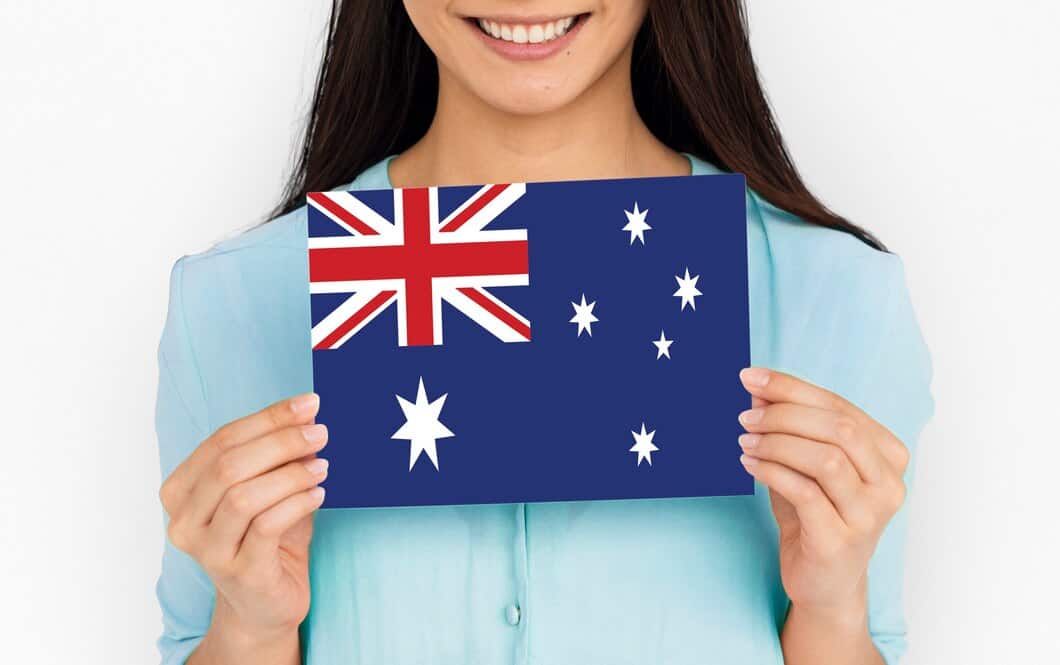
The application process for an Australian skilled work visa involves several steps:
1. Submit an Expression of Interest (EOI):
Create an account on the SkillSelect portal and lodge an EOI. Ensure that all details are accurate, as this determines your eligibility and ranking.
2. Undergo a Skills Assessment:
Apply to the designated authority for a skills assessment. This step validates that your qualifications and experience match Australian standards. It is an essential prerequisite for lodging your EOI.
3. Receive an Invitation to Apply:
If your EOI ranks high, you will receive an invitation to apply for a visa. Invitations are typically issued during SkillSelect invitation rounds.
4. Gather Required Documents:
Collect all necessary documents, such as:
- Proof of age (passport or birth certificate)
- Skills assessment outcome
- English test results
- Work experience references
- Educational certificates
5. Lodge Your Visa Application:
Submit your visa application online within the timeframe specified in your invitation. Pay the visa application fee and upload all required documentation.
6. Undergo Health and Character Checks:
Complete a medical examination and provide police clearance certificates to meet Australia’s health and character requirements.
For detailed instructions and application forms, refer to the official Australian Immigration and Citizenship website.
Which Skilled Visa Is Easiest for Australia?
The “easiest” visa depends on your circumstances, such as your occupation, points score, and state or territory preferences. Here are two popular options:
- Skilled Independent Visa (subclass 189):
- Does not require state or employer sponsorship.
- Suitable for individuals with occupations on the MLTSSL.
- Requires a high points score.
- Skilled Nominated Visa (subclass 190):
- Requires nomination by an Australian state or territory.
- Open to applicants with occupations on the visa 190 Australia list.
- Often easier due to additional points from state nomination.
Alternative Skilled Visa Options
If you don’t qualify for the 189 or 190 visas, consider these options:
- Temporary Skill Shortage Visa (subclass 482): Allows you to work temporarily in Australia if an employer sponsors you.
- Skilled Regional (Provisional) Visa (subclass 491): Targets skilled workers willing to live and work in regional areas.
How Can Immigration Lawyers Help?
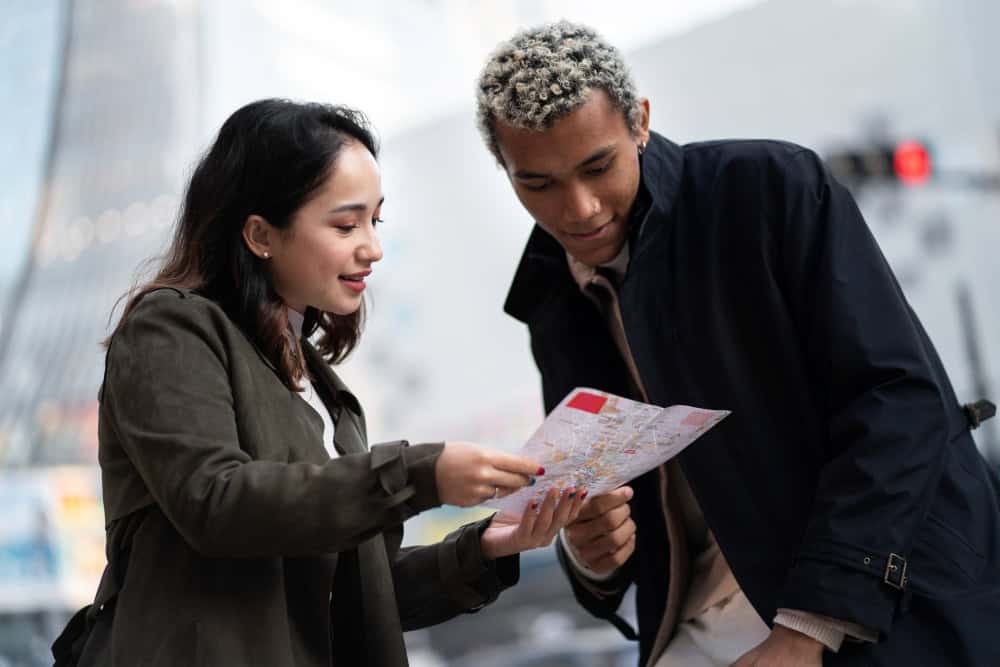
Navigating the visa process can be complex. Seeking assistance from experts like Australian migration lawyers or Gold Coast immigration lawyers ensures:
- Accurate preparation of your EOI and application.
- Proper documentation submission.
- Guidance on meeting specific visa requirements.
- Representation in case of issues with your application.
Conclusion
Applying for an Australian skilled work visa involves careful planning and adherence to strict guidelines. From ensuring your occupation is on the Australia skilled occupation list to meeting the skilled visa Australia requirements, every step is vital. Whether you opt for the 189 visa or the 190 visa requirements, staying informed and seeking professional help can increase your chances of success.
The post How to Apply For an Australian Skilled Immigration Visa? appeared first on TheAussieway.
]]>The post How Tourists Make Australia RICH! Australia’s Economic Gamble! appeared first on TheAussieway.
]]>
Australia has a Western-style capitalist environment with one of the highest per capita GDP in the world, most of which is derived from the service sector. Interestingly, the mining sector and the agriculture sector also contribute a huge chunk to Australia’s GDP along with the tourism sector. Thanks to Australia’s lush hinterlands, sun-kissed beaches, and other cultural riches, it has attracted tourists from all over the world along with their riches. Let’s find out more about how the Australian economy works.
The Intricacies of the Australian Economy
Australia has a mixed economy which has experienced a massive boom since the economic liberalisation during the 1980s. Even though the economic giant experienced a fall in GDP and employment after the recession in the early 1990s and 2020, it bounced back quickly pertaining to its mining sector which evolved since the gold rush in 1840. However, it would be unfair to credit the mining sector solely for the economic stability of the nation. In fact, there are multiple pillars, including agriculture, manufacturing, service, tourism, and finance which have upheld the foundation of the Australian economy.

Mining Sector
Australia is one of the largest producers of gold, silver, and copper in the world and the largest producer of iron ore. It is also one of the largest producers of coal, bauxite, manganese, zinc, cobalt, uranium, nickel, and sulphur, making it one of the most mineral-rich nations. A vast revenue of the Australian economy is derived from the export of these minerals and metals.
Service Sector
Australia may not be the Silicon Valley but it is no less in terms of its IT services. A vast majority of the Australian population, especially in the urban areas and state capitals cities are engaged in service sectors which contributes to the major chunk of GDP in the country.
Manufacturing Sector
Even though Australia was one of the manufacturing giants during the 1960s with companies like Ford, Holden, Mitsubishi, and Toyota having their hubs in the country, the manufacturing GDP of the country has declined since then
Agricultural Sector
Australia has a lush tapestry of natural resources, ideal for agriculture and irrigation. Even the locals are spoiled with farm fresh produce. Fishing and forestry in Australia is also a booming industry which not only contributes to the nation’s GDP and provides employment but also earns huge sums of revenue from exports.
Tourism Sector
The tourism sector is one of the most important pillars of the Australian economy comprising domestic as well as international tourists. According to the World Tourism Organisation, Australia is the fortieth most visited country in the world. Even though the majority of the GDP comes from domestic tourism in Australia, the number of international tourists has also increased in the country, thereby strengthening its economy. Let’s find out more about the contribution of the tourism sector to the Australian economy.
The Role of Tourism in the Australian Economy
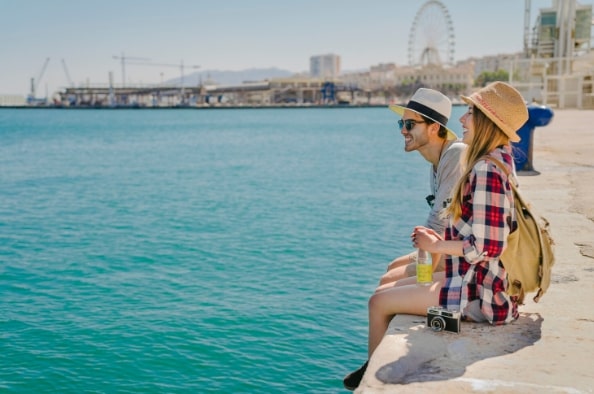
The importance of tourism in boosting the Australian economy is immense. It generates thousands of jobs across the country and aids in the development of the infrastructure of the country as well. When more and more tourists visit Australia and encourage the authorities to provide the tourist with best-in-class and safe facilities. This leads to new roads and highways, developed parks, improved public spaces, new airports, and possibly better schools and hospitals. Moreover, when tourists spend their money on accommodations, local food, and souvenirs, it also helps the local businesses grow.
Australia generated $60.8 billion in direct tourism gross domestic product (GDP) in the financial year 2018–19. It also made up 5% of the total workforce in the country in the same year by employing over 666,000 Australians. Before the pandemic hit in 2019, it was recorded that on an average, Australians travelled four times a year domestically. One in every eight businesses across the country was in the tourism businesses and one in twelve Australians were employed in the tourism sector in 2018-19. That’s not all folks! There was also a massive growth in the number of tourists from countries like India and China. No wonder the tourism sector attracted the riches. Unfortunately, something changed for the worse. The Covid 19 pandemic left the tourism sector gasping for air. But how has COVID affected tourism in Australia?
The Impact of Covid
After the Covid-19 pandemic hit, national and mostly international travel ground to a halt all across the globe including Australia. The tourism economy was heavily hit in 2020, with a total loss of almost $80 billion in tourism revenue in just one year. This served as a major wake-up call, reminding each and every one of us just how important the tourism sector is in the context of the global and national economy. The ripple effects were felt not only by tour operators and accommodation providers but also by small businesses in regional areas heavily reliant on tourism.
The Comeback of Tourism in 2022 and the Future Ahead
With the borders opening for tourism in 2022, the Australian economy heaved a sigh of relief and new hopes for the economy were reborn. Domestic tourism in the country has been able to rebound substantially, even though the numbers are significantly lower than in pre-pandemic times. However, total domestic tourism spending and the average spend per visitor have increased since March 2022, as compared to pre-pandemic times. International tourism has also picked up pace since 2022, but the number of outflow of International tourists has been greater than the number of inflow of tourists. The good news is that the tourism industry is likely to recover completely in just a few years, and tourism will continue to be one of the strongest pillars of a sustainable economy for Australia.
The post How Tourists Make Australia RICH! Australia’s Economic Gamble! appeared first on TheAussieway.
]]>The post Wellness Retreats Near Brisbane Can Revitalise Your Mind appeared first on TheAussieway.
]]>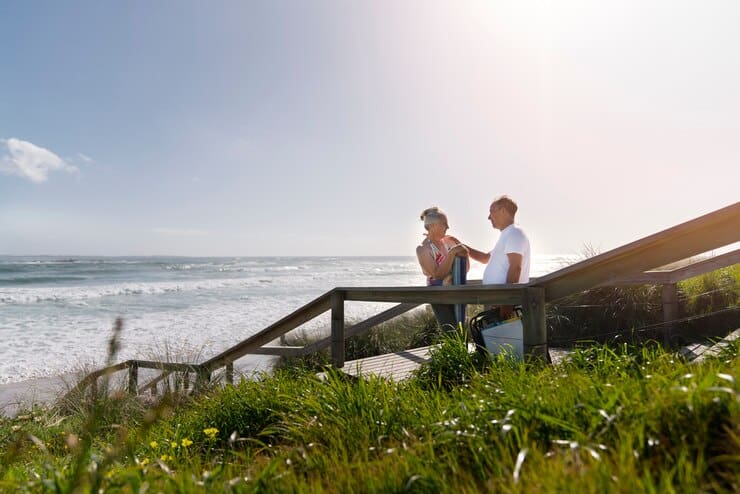
While you can get a wide array of recommendations for wellness retreats with just a quick online search, there are some really amazing holiday destinations in Brisbane and Byron Bay coastline where you can experience the wilderness and beauty of the sea from the hilltops. Search for wellness retreat Brisbane and you have options like EcoOasis, Crystal Creek, Eden Health Retreat etc, are quite a few top short stay destinations to experience calmness. These retreats offer immersive experiences wherein you can connect with nature and revitalise your health. The ideals and experiences of these wellness retreats also align perfectly with the values of environment-conscious sustainable Australians.
Recognizing Signs of Burnouts and Stress

Do you really need these wellness retreats? The question you should be asking yourself is whether you are stressed and burned out. If the answer is yes, then you definitely need some time off at a wellness retreat.
Signs of stress and burnout?
- Exhaustion and fatigue, even after adequate rest.
- Irritability and mood swings become more frequent.
- Physical symptoms such as headaches, muscle tension, and gastrointestinal issues.
Moreover, you may find yourself increasingly cynical or disillusioned about your work or personal lives. These signs should serve as wake-up calls, signaling the need for a pause and a reset in order to avoid further depletion of physical, mental, and emotional reserves.
If any of the following symptoms are plaguing your life, then consider this your wakeup call and begin your wellness journey before they adversely impact your health any further.
Benefits of Health and Wellness Retreats
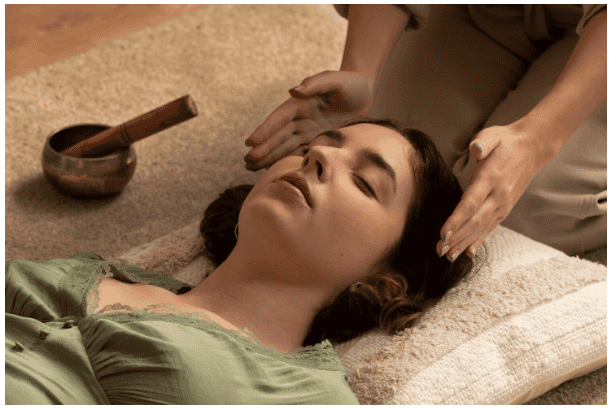
You might pause to think “what good can a mere weekend at a retreat do? After all, we’ll all have to get back to the same old monotonous schedule.” But here’s the catch, the benefits extend far beyond your stay at the retreat, permeating every aspect of your life. While rejuvenation, pain relief and relief from fatigue are some physical benefits you can obtain from the experience, retreats also provide you with the much-needed mental break, providing you with emotional balance, clarity, and allows you to cultivate a sense of purpose and peace.
Physical Benefits

Image Credit: https://www.news-medical.net/news/20221017/Physical-exercise-provides-positive-health-benefits-on-COVID-19-outcomes.aspx
- Activities, such as yoga, hiking, and fitness classes can increase your fitness level.
- Nutritious eating habits developed during the retreat can lead to healthy lifestyle choices.
- Activities like therapeutic bodywork such as massage, acupuncture, and hydrotherapy can provide pain relief and relaxation.
Mental Benefits

Image Credit: https://gsahec.org/articles/tobacco-article/psychological-benefits-of-quitting/
- Participating in wellness retreat activities such as mindfulness practices, meditation, and guided relaxation sessions and reduce stress.
- Wellness retreats offer a break from modern life which can improve your mental clarity.
- Wellness activities like counselling and group discussions can decrease your mental fatigue.
Emotional Benefits
- Wellness retreats provide opportunities for self-discovery and introspection which can reduce emotional stress.
- During these retreats, you will bond with others in group activities creating a sense of community which will help you strengthen your relationships.
- Retreats also inspire individuals to reconnect with their values, passions and goals which can give you a renewed sense of purpose.
Spiritual Benefits
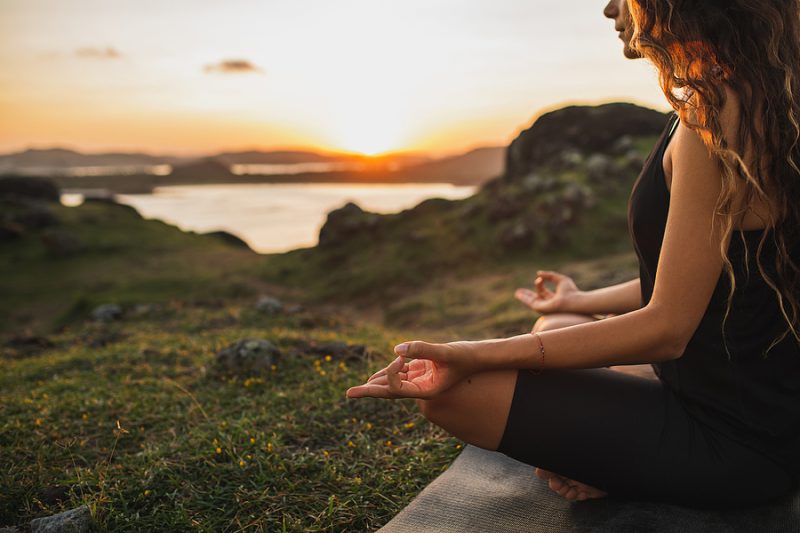
Image Credit: https://stride.com.au/what-are-the-benefits-of-spiritual-wellness/
- Wellness retreats are nothing short of a sacred place for Aussies where they can experience tranquility and cultivate their inner peace.
- It offers a pristine location for weekend escapes which can help you connect with nature.
- Last but not the least, these retreats are all about embracing a holistic approach which rejuvenates your mind, body and soul alike.
Why Wellness Retreats?

It’s natural to be tired of the routine chaos and just when you thought you have lost all hope, the retreat experience becomes your saviour, offering you the perfect sanctuary to unwind. If you are ever in Australia, you can explore the breathtaking views of Tweed Valley and Byron Bay just by checking yourself into this retreat. Nestled amidst awe-inspiring landscapes, you can recharge yourself.
Tranquil Retreat Locations
When you are looking for weekend escapes, the first criteria that pops into your mind is the location. After all, no one wants to go back to chaos if getting away from the pollution and noise is the main purpose. Surrounded by lush greenery, pristine beaches, and mountains help you connect with nature. Remote location wellness retreat serves as the perfect getaway location.
Immersive Wellness Activities

Image Credit: https://blog.meetingsigns.com/immersive-wellness-activities-for-your-next-virtual-event
Through a series of relaxing activities at these accommodations, which are intended to restore your mind, body, and soul, you can engage in a pursuit targeted on relaxation. Apart from spa, meditation or quick strolls along river trails, you can also enjoy curated activities like nature photography and mud art. This will help you get in touch with nature’s recuperation and as you gasp in the air you can feel the gentle contact of nature.
The Path Forward
Let this read be a reminder for you to take a step back from the pressures of your routine and immerse yourself in holistic healing practices guided by wellness experts. These retreats are the perfect opportunity for you to reclaim your sense of joy, vitality and balance. Trust me, take the first step towards healing and your mind, body and soul will thank you for it!
Folks living in Queensland, especially Brisbane looking for a perfect short stay destination have quite a handful accommodations in Tweed Valley and nearby places. Byron Bay Retreats have breathtaking landscapes you can’t miss. Enjoy luxury time with family or loved ones in peace and experience a holistic lifestyle to revitalise your mind and soul.
Go ahead and book your stay and discover a happier you.
The post Wellness Retreats Near Brisbane Can Revitalise Your Mind appeared first on TheAussieway.
]]>The post 15 Most Romantic Destination To Make Your Valentine Special appeared first on TheAussieway.
]]>
Valentine’s Day is a beloved occasion celebrated by lovers everywhere, and this is also true in Australia. With our hectic work schedules, taking time off to celebrate makes it even more memorable. Everyone has different love languages and methods to spend this beautiful day. It’s a day to show your significant other how important they are, observed annually on February 14. As couples consider Valentine’s Day as a day to show each other how much they adore them and fortify their relationship, the celebrations have only grown with time. It is indeed the perfect time to enjoy your romantic life In Australia, people know how to celebrate Valentine’s Day by exchanging gifts, sending flowers and chocolates to one another, and going on dates.
You’ll be hard-pressed to find a place with greater variety in romantic spots than Australia if you’re looking for a holiday for two. You’ll always have enough to do together thanks to the idyllic beaches, rolling valleys, stunning National Parks, and vibrant towns.
You may discover every kind of experience in Australia, whether you enjoy fine dining in the lap of luxury or roughing it in the wilderness. Additionally, Australia has a tonne of wonderful romantic lodging options, so wherever you decide to travel, you can be sure that there will be top-notch hotels nearby. Australia is a great place full of romantic destinations of any kind!
With so many luxurious activities to choose from, Australia is a country that is perfect for unwinding and relaxing with that special someone in your life. There is therefore a tonne to do if you want to make your Valentine special as well!
1. Great Barrier Reef
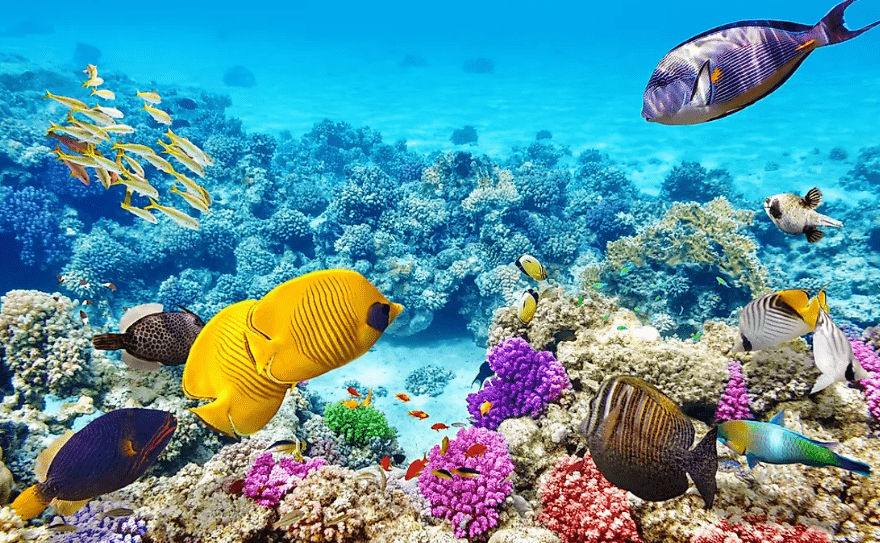
There is no better way to rekindle your relationship with that important someone than to spend time together at one of our three magnificent lodges on the Great Barrier Reef.
A perfect valentine’s destination with private pavilions placed to take in the breathtaking views of the Whitsunday region, qualia is a lush tropical oasis on Hamilton Island that offers easy access and a luxurious stay. During your stay, make sure to schedule a treatment at the renowned Spa qualia and go on a sunset cruise through the waterways.
A short flight away from Cairns, Lizard Island is directly on the outer barrier reef and offers a variety of activities. To enjoy the best the reef has to offer, snorkel right off the beach or go on an expedition to the Outer Great Barrier Reef for diving or snorkelling. Additionally, Lizard offers 24 private white sand beaches where you can spend quality time with your Valentine while bringing your own dinghy and picnic lunch.
READ – Top 5 Amazing Islands To Visit Great Barrier Reef
2. A Romantic harbour cruise in Sydney
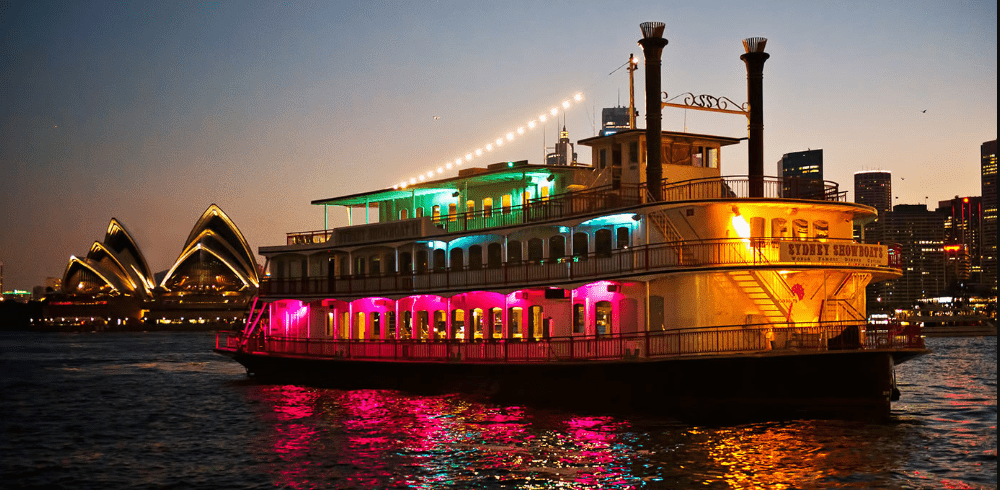
Valentine’s Day in Australia is best spent on a romantic cruise on the water far from the bustle of the city. You could go on any number of cruises, particularly in Sydney. All you require is ideal soft lighting, a refreshing breeze, and 360-degree water vistas. Enjoy a glass of champagne while admiring the Sydney Opera House from a distance. Amazing meals, fine wines, and late-night beverages are typically available on cruises to keep you pleased. Live music and dancing make the night even more memorable. Some cruises to attempt to include the Sydney by Night cruise, the Deluxe Sunset Cruise, and the Iconic Harbour Cruise.
3. Explore Whitehaven Beach’s waves in depth
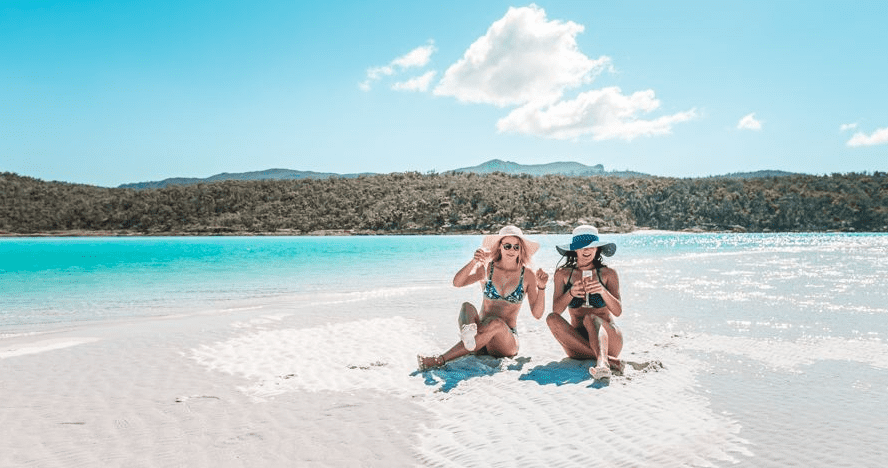
Valentine’s Day in Australia this year should be spent at the beach tanning and swimming. One of the most romantic and relaxing things to do on Valentine’s Day is to spend the day at the beach with your significant other, with the soft sand beneath your feet, the scorching sun on your face, and a cool drink in your hand. One of the most beautiful beaches in the world, Whitehaven Beach features crystal-clear water and a long stretch of coastline that follows the Great Barrier Reef. Don’t forget to have a refreshing swim in the water and, of course, wear a tonne of sunscreen with the abundance of stunning Australian beaches and the wonderful weather!
4. Date night at Africola at candlelight

What could be more satisfying and intimate than a delicious lunch at a posh restaurant where you can go all out with your outfit? It doesn’t get more romantic than trying a new restaurant you’ve been wanting to try for a while or an old favourite. All anyone can ask for on this Valentine’s Day is a candle with a soft, pleasant glow while they indulge in some delectable meal. Valentine’s Day in Australia can be spent at some incredible eateries with your significant other. One of the top restaurants in Australia is called Africola, and it is located in Adelaide. It offers fantastic food, incredible 3-ingredient cocktails, and an exceptional collection of local and foreign wines.
5. A starry night at Warrumbungle National Park
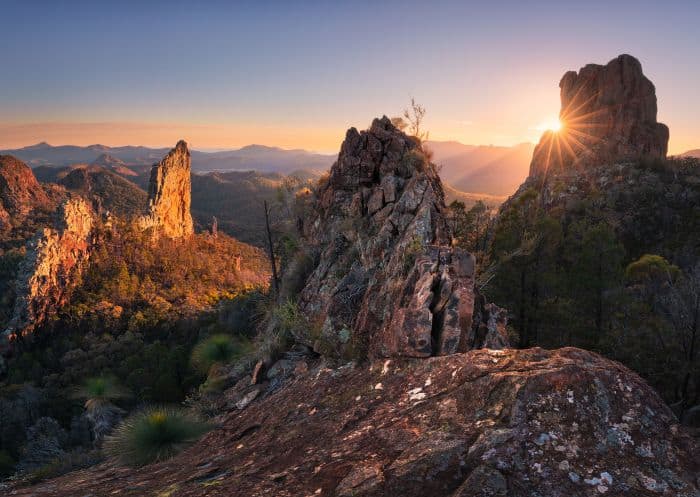
Anyone would die for the chance to view the stars in the open sky. You don’t need a telescope to enjoy the view; simply spread out a blanket, huddle up under another, and cosy up while gazing up at the lovely stars and constellations. Since Warrumbungle National Park was Australia’s first dark sky park, it is one of the best locations for stargazing. Every astronomer’s and stargazer’s dream, these skies are perfectly clear. Additionally, you can have a private candlelit dinner outside. You may always go to a neighbouring planetarium and view that night sky if it’s too cold outside or overcast out. Nothing else counts on this particular day as long as your lover is there.
6. Broadbeach, QLD (Gold Coast)
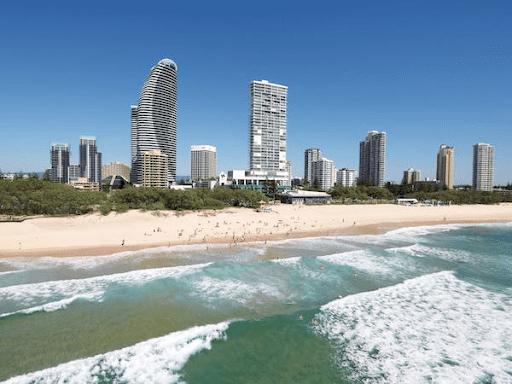
Why not make the most of it with your lover while visiting the Gold Coast, where the majority of visitors come to enjoy the magnificent beaches? Take advantage of the Gold Coast’s sunny beach days, excellent surfing, fantastic restaurants, and laid-back vibe for a romantic holiday.
In contrast, there are many activities in the area besides visiting the beaches. Nearby active adventures abound at Springbrook National Park, Currumbin Rock Pools, and Mount Warning. One of the greatest places to base oneself for a romantic break on Queensland’s Gold Coast is certainly Broadbeach.
7. South Australia’s Kangaroo Island
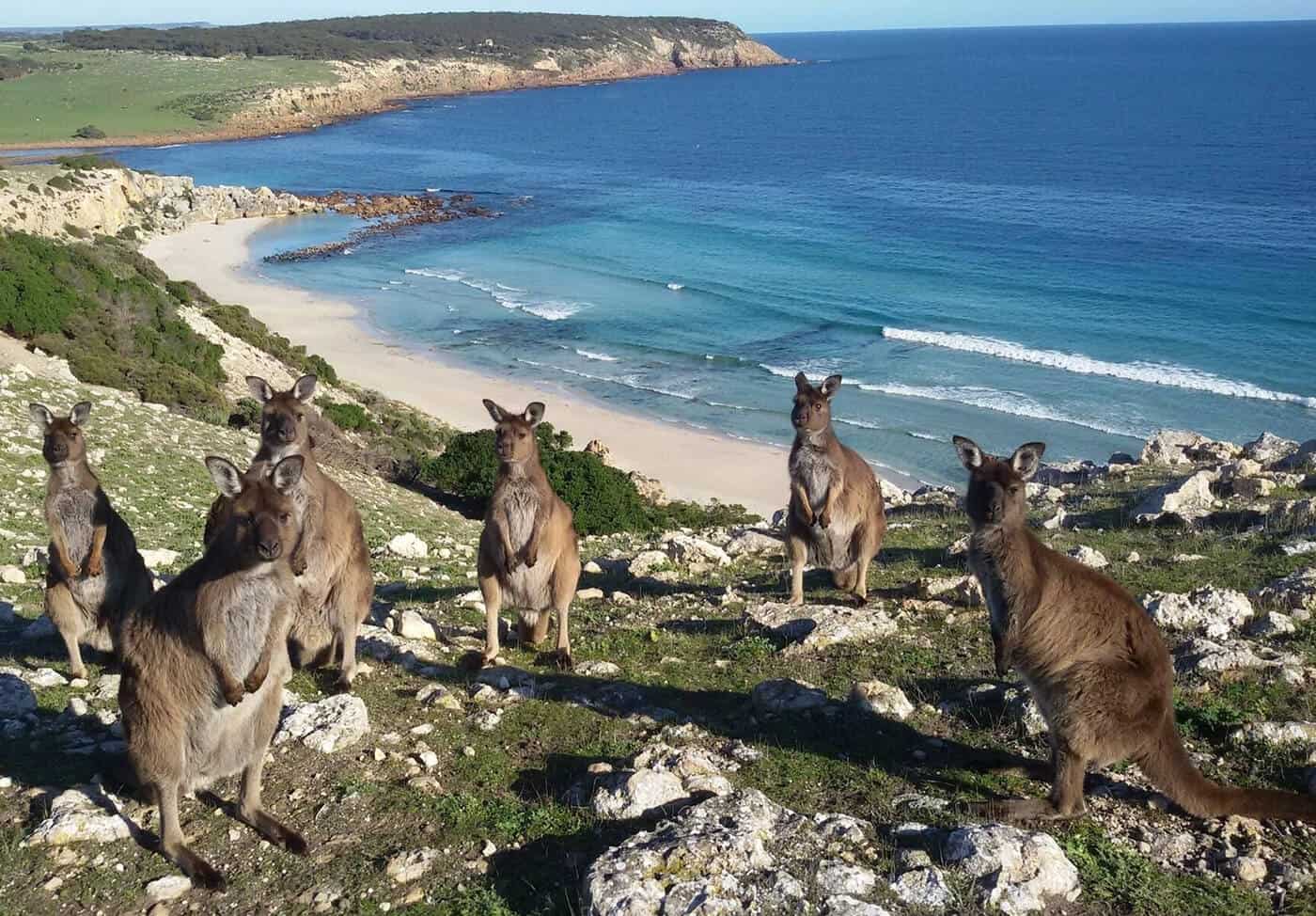
Consider visiting Kangaroo Island, a wild island off the coast of South Australia, for one of the most unusual romantic vacations in all of Australia. Discover the wonders of Flinders Chase National Park while spotting seals on the rocks, taking in the breathtaking coastline, getting up close and personal with kangaroos, and consuming plenty of fresh, locally produced food. The island offers a variety of opulent lodging alternatives, which can add a unique romantic touch to your trip.
8. CABN, ADELAIDE HILLS
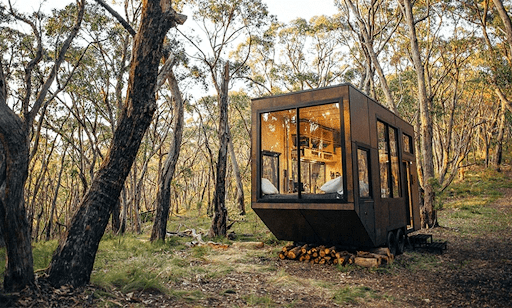
At CABN, unplug and relax surrounded by nature. This entirely off-grid, eco-friendly small house is a charming romantic getaway destination in the Adelaide Hills. It is situated on 180 acres of scrubland and is close to a conservation area with amazing walking paths and breathtaking vistas. After a day spent exploring the nearby bushland, relax in your king-size bed with a good book, gather around the outdoor fire, or take in the night sky’s countless stars. In case you wish to pamper your pet, Jude, the cabin’s name, is also pet-friendly.
9. NSW’s Hunter Valley
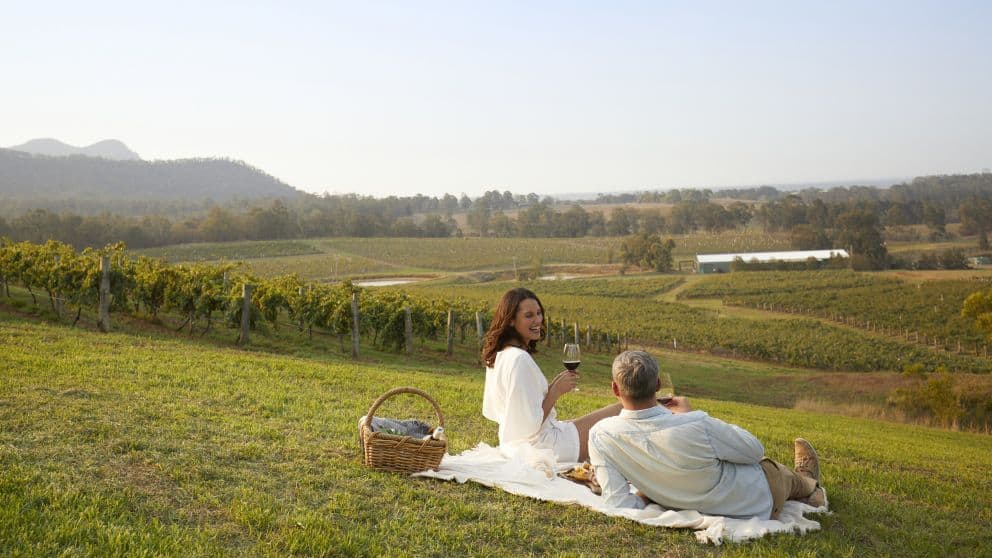
Our favourite wine region in Australia is the Hunter Valley. It offers some of the best wines in the nation and is inexpensive, accessible, and unpretentious. The area offers a tonne of delectable dining establishments and entertaining activities. No of your budget, you can spend some time with your loved one in Hunter Valley thanks to the region’s range of lodging alternatives, which range from basic to luxurious.
10. Victorian Great Ocean Road
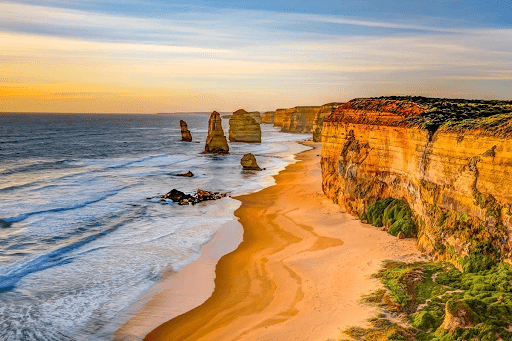
The Great Ocean Road is a must-see if you’re seeking romantic getaways near Melbourne. This incredibly scenic route follows the southern coast starting in Torquay just outside of Melbourne and spanning 243km (150 miles) all the way to Warrnambool. The Great Ocean Road is considered one of the best road trips in Australia and in our opinion, any road trip is an amazing opportunity to reconnect with your loved one, especially one as picturesque as the Great Ocean Road.
11. Margaret River
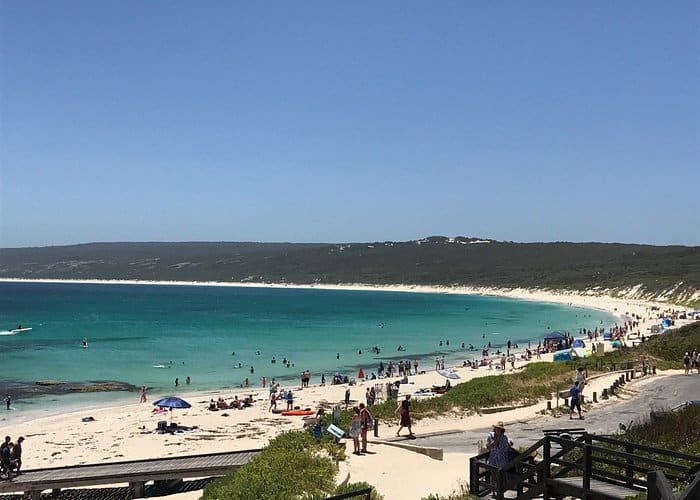
If you’re seeking a romantic weekend near Perth, go to Margaret River. The idyllic and charming backdrop of this little town makes it the ideal place to spend time with your significant other. Explore the Margaret River wine region, take advantage of the area’s well-known beaches, or see the sea cliffs at the Leeuwin-Naturaliste National Park, which is close by.
Enjoy delicious meals at nearby eateries that serve craft beer, local wines, and farm-to-table food to raise the romance factor!
12. A Wine Date

Australia is lucky to have a wide selection of wine regions that are close enough to their main city for a weekend vacation, as superb wine is one of the vital features of the Australian lifestyle.
A prime example of this is The Barossa, South Australia; only one hour from Adelaide, you can be unwinding in your suite at The Louise or partaking in a private wine experience at a nearby estate. The Louise and the Barossa region as a whole provide a variety of high-quality vineyard and dining experiences with a focus on regional foods as well as the opportunity to unwind in your suite. Why not remain a second day?
Another location that is ideal for a luxurious getaway is Cape Lodge on the Margaret River. Since Perth is nearby, many local, interstate and foreign tourists frequent the area. And the ideal location to combine tours of wineries with chances to enjoy the local fauna and landscapes of this stunning area.
13. Queensland’s Scenic Rim
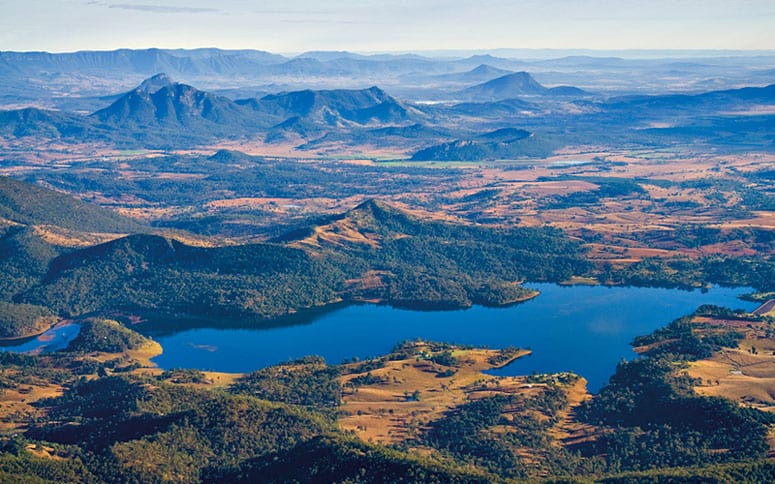
Australia has a lot to offer for adventurous romantic holidays not too far from Brisbane. The Scenic Rim Walk by Spicers is one of our favourite spots to get away from the city and take in the beauty of the area in a cosy yet active environment. This all-inclusive luxury guided walking adventure includes two nights of luxury lodging, all meals, and two days of guided walks through the Gondwana Rainforest National Park, which is listed as a World Heritage Site.
14. The Cairns, QLD
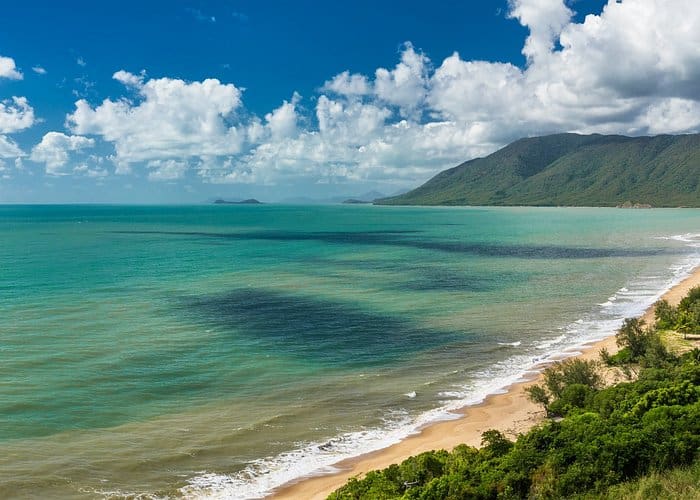
Although Cairns may not be the most romantic place in Queensland, this action-packed city has enough to offer couples seeking an adventure romantic holiday. Spend your nights at one of the town’s many stunning hotels and your days taking part in activities like skydiving, scuba diving, hiking, and wildlife encounters.s.
15. The Romantic City Walks

Perhaps your notion of a romantic getaway is a city stay, and The Tailor has many suggestions there as well that are suited to your preferences. Sydney and Melbourne both have opulent lodging choices, and a variety of travel options may be organised to learn about the area – all with local expertise and insights to ensure you make the most of your visit.
In Sydney, be sure to include a private harbour cruise to see our most famous and beautiful harbour from the water. You can also climb the Sydney Harbour Bridge for a bird’s-eye view of the city, and the more adventurous might want to take a private surf lesson at Bondi, Australia’s most popular beach.
In Melbourne, there are a variety of restaurants to select from. You may also go on a private walking tour of the city’s lanes and arcades, stopping at local businesses run by artists and food producers. Or take a scenic helicopter ride over the city and the sea to see the entire city.
So, here is how Valentine’s Day is observed in Australia. This list includes something for everyone, from strenuous treks and stargazing to romantic meals and spa days.
The post 15 Most Romantic Destination To Make Your Valentine Special appeared first on TheAussieway.
]]>The post 9 Beautiful and Rare Species Found Only in Australia appeared first on TheAussieway.
]]>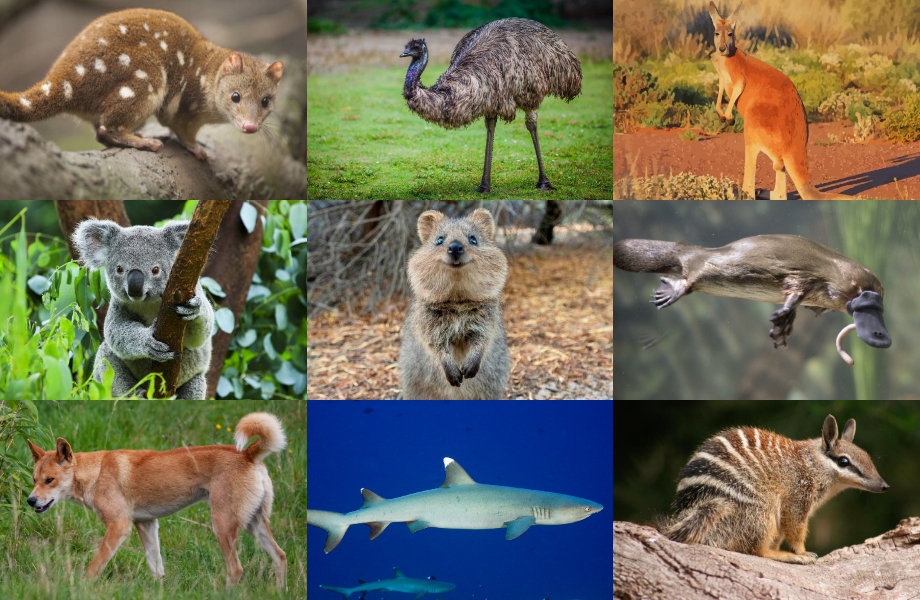
The supercontinent of Gondwana split 180 million years ago. What would become Australia and Antarctica was part of a breakaway landmass from that breakup. Australia had completely separated by the time it travelled north on its own 30 million years ago. Since then, modifications to the land’s climate and physical isolation from the rest of the world have contributed to the development of different unique Australian species. Australia is the only place in the world where more than 80% of our flora, animals, reptiles, and frogs can be found.
About one million different native animal species can be found in Australia.
More than 80% of the country’s mammals, reptiles, and frogs, as well as the majority of its freshwater fish and 70% of its bird species, are exclusive to the Australian natural environment.
140 species of marsupials, such as kangaroos, wallabies, koalas, wombats, and the Tasmanian Devil, which is currently only found in Tasmania, and is one of the rare species in Australia. The dingo is the largest carnivorous mammal native to Australia and a wild dog.
About half of the 828 bird species found in Australia are unique to the country, with the huge, nearly two-meter-tall flightless emu being the most well-known.
Waterbirds, seabirds, and birds that live in open woodlands and forests all abound in Australia, including black swans, fairy penguins, kookaburras, and lyrebirds. Australia is home to 55 different species of colourful parrots, as well as a stunning array of cockatoos, rosellas, lorikeets, parakeets, and budgerigars.
More poisonous snake species, namely 21 of the 25 deadliest species, as well as two types of crocodiles, one saltwater and one freshwater, may be found in Australia than on any other continent.
The UNESCO World Heritage-listed Great Barrier Reef, which is the biggest coral reef system in the world, is also located in Australia. With our Exploring Our Ocean course, you may learn more about marine environments.
The predatory great white shark, which can reach a length of six metres, the enormous whale shark, which can grow to a length of 12 metres, and the box jellyfish, one of the world’s most venomous creatures are among the distinctive marine species.
Kangaroos, dingos, wallabies, wombats, and, of course, koalas, platypus, and echidnas are just a few of the well-known Australian wildlife. However, there is still a great deal that is unknown about the native creatures of Australia. In this article, we’ll look at 9 of the most unique animal species that are considered rare species in Australia.
Why are Australian animals so unique?
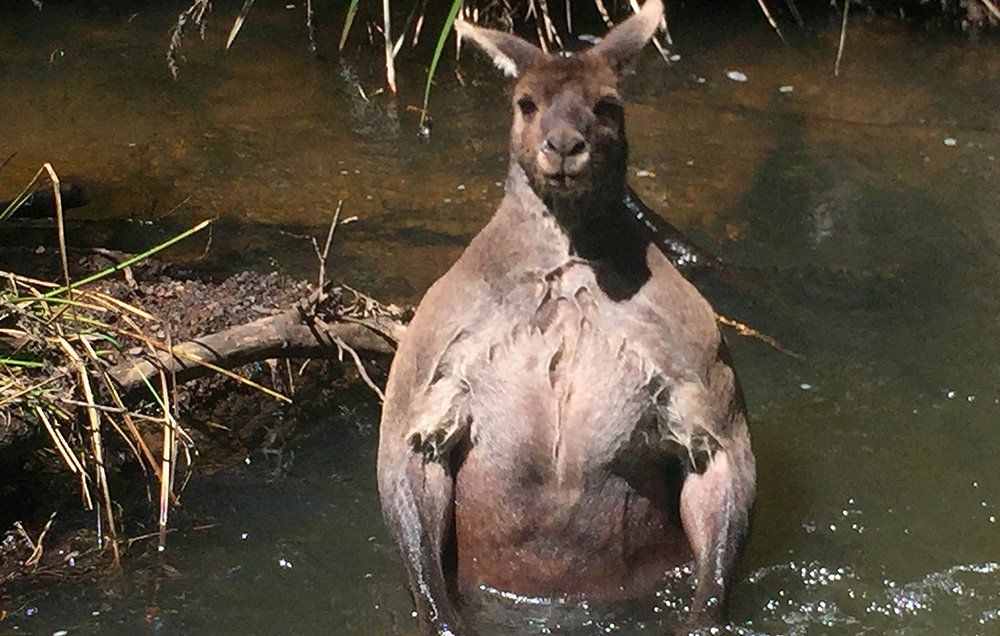
Since Australia is geographically isolated in the southern hemisphere and is known as “The Land Down Under,” many of its animals are unique to Australia.
Around 250 million years ago, the Earth consisted of simply one enormous supercontinent called Pangaea, according to evolutionary history and fossil evidence.
After around 50 million years, this supercontinent split into the continents Laurasia and Gondwana. Monotremes and marsupials dominated the region of tropical forests in Gondwana at the time of this split, whereas placental mammals originated in Laurasia.
After thereafter, in the Jurassic Period, 180 million years ago, the western part of Gondwana, which comprised Africa and South America, split off from the eastern half, which contained Madagascar, India, Australia, and Antarctica. 40 million years later, India gradually broke away from Australia and Antarctica, forming the Indian Ocean. Australia and Antarctica slowly drifted to the south, where they were surrounded by immense oceans and cut off from the rest of the world.
Australia and Antarctica ultimately split apart 50 million years ago. Its environment changed as it moved away from the southern arctic zone, becoming warmer and dryer, and new animal species emerged and took over the landscape.
Eventually, monotremes and marsupials took over as the main mammals in Australia due to their less demanding reproductive systems and greater suitability for this new climate.
The original inhabitants of the Australian landmass no longer interacted with species from other continents, thus they continued to develop on their own. Australian native animals are distinctive from those found elsewhere in the globe because of their distinct evolution, which has produced several odd Australian animals.
Australia is home to some of the most unique species on Earth due to its geographic isolation, diverse ecosystems, and evolutionary history. Separated from other continents for millions of years, Australia developed a vast array of flora and fauna found nowhere else. Around 80% of its mammals, reptiles, and amphibians are endemic, meaning they exist only in Australia.
One of the main reasons for this incredible biodiversity is the variety of habitats, ranging from rainforests and deserts to coastal regions and mountains. These environments have allowed Australian native animals to adapt in extraordinary ways. The platypus, for example, is a monotreme, meaning it lays eggs despite being a mammal. Kangaroos, koalas, and echidnas are also unique to the continent, showcasing Australia’s remarkable wildlife.
Unfortunately, human activities, habitat destruction, climate change, and the introduction of invasive species have put many animals at risk. Some Australian animals that are endangered include the Tasmanian devil, the northern hairy-nosed wombat, and the orange-bellied parrot. Conservation efforts aim to protect these species through habitat preservation and breeding programs.
Additionally, there are several Australian protected species, including the numbat and the Gouldian finch, which are safeguarded under conservation laws. National parks, wildlife reserves, and strict environmental policies play a crucial role in preventing further decline.
Despite these efforts, some animals have already been lost. The thylacine, or Tasmanian tiger, is one of the most well-known Australian extinct animals, having disappeared in the 20th century due to hunting and habitat loss.
Let’s explore some of Australia’s most unique species to create awareness.
Fitzroy River Turtle
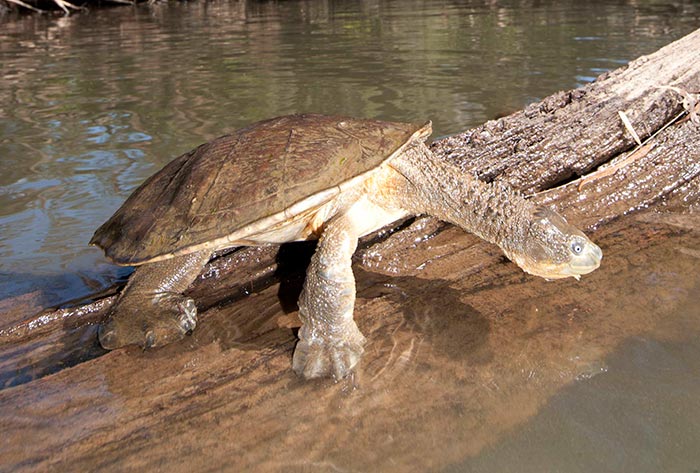
Rheodytes leukops, a species of turtle from the Rheodytes genus, live in the Fitzroy River. The other species in that genus, Rheogytes devisi are some Australian extinct animals, leaving only them as the remaining species. In Queensland, Australia’s Fitzroy River and its tributaries are where you can find them.
Fitzroy River turtles spend roughly 21 days submerged. They are remarkably adaptable creatures. The other species of their genus are extinct, leaving only these critters as survivors. The extinct species was known by the name “Rheodytes devisi”. September to October is the time when they lay their eggs.
These turtles are classified as Vulnerable species on the IUCN Red List. Because of habitat degradation, predators, and population decrease, they are classified as Vulnerable by IUCN. These turtles are frequently attacked, along with their nests, by foxes, pigs, and goannas.
Because predators frequently attack and totally destroy their nest, there are no surviving hatchlings left, which is a major factor in their Vulnerable conservation status. Its population growth is challenging for this species because of this.
To get the most out of their toe daggers, cassowaries can jump feet first, so their claws can slash downward in mid-air towards their target.
Australian Southern Cassowary
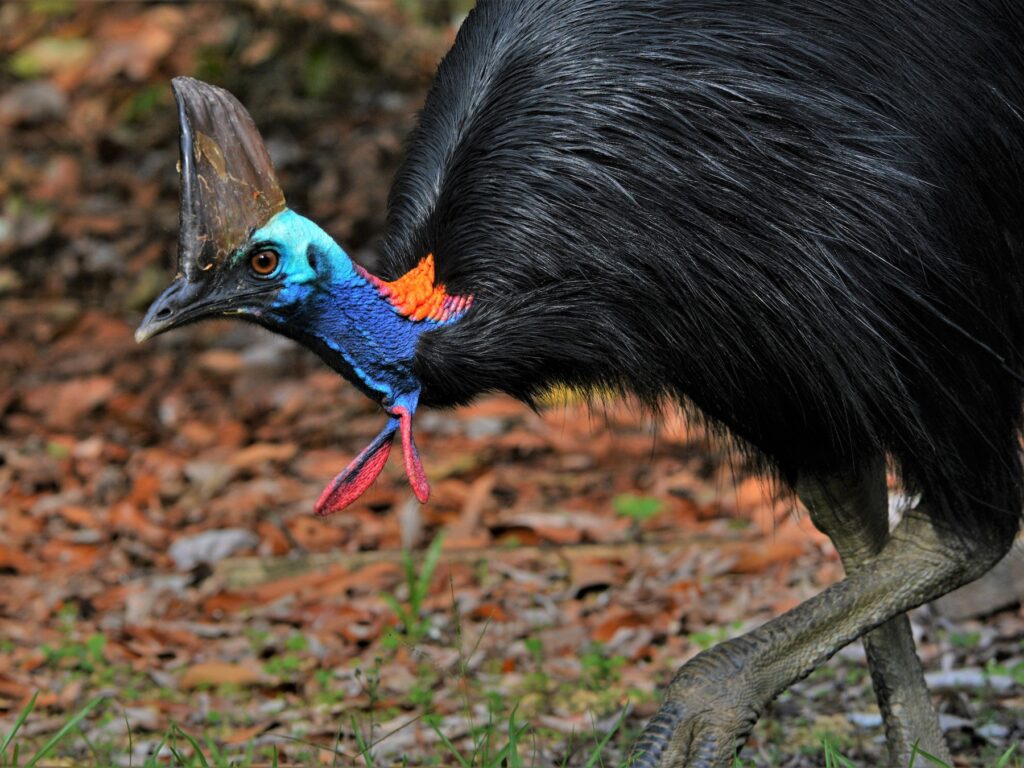
This bird, which descended from dinosaurs, has been designated as the “most hazardous bird on Earth.” Most human attacks in which victims are kicked, shoved, jumped on, and headbutted are motivated by the need to provide food for the bird. Their 12-centimetre middle claw functions as a dagger and may cause significant harm.
Be on the lookout for the elusive cassowary if you happen to be in Tropical North Queensland. It’s a big, colourful bird that has a prehistoric appearance if that answers your question. The cassowary may reach a height of 180 cm and often weighs 60 kg. With its distinctive appearance, the cassowary is simple to identify. Especially its blue neck and the helmet-shaped protrusion on its head.
They’re great sprinters too, with a top running speed of 50 km/h through dense forest. Not only that, they’re good swimmers, with the ability to cross wide rivers and swim in the sea. That’s one animal you don’t want to be chased by!
Saltwater Crocodile
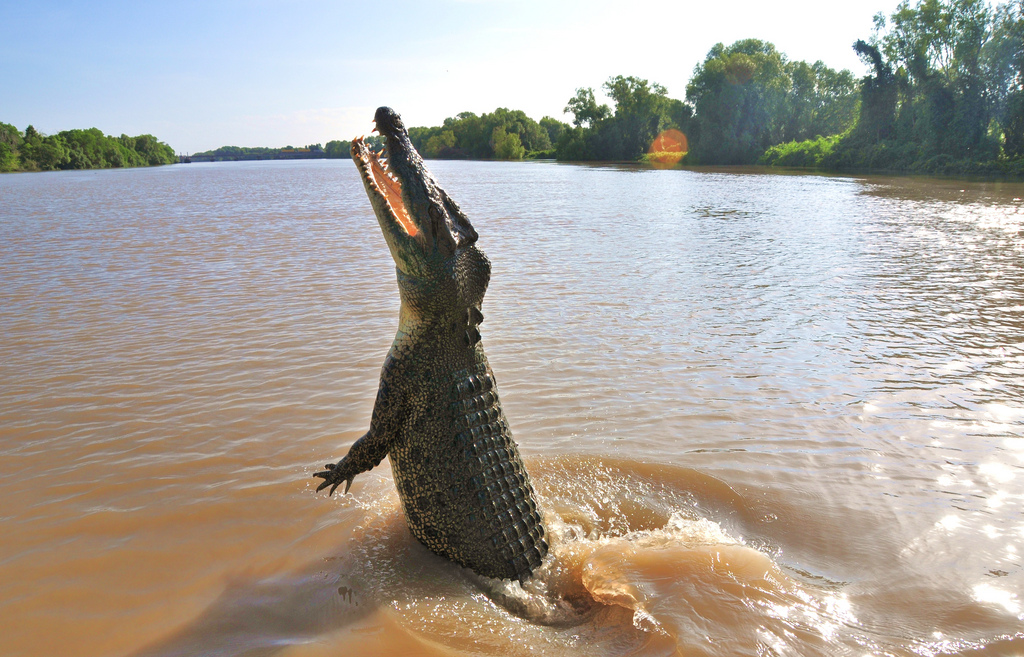
It is the largest reptile in the world, with a known maximum weight of over 1000 kg, and has the strongest bite of any species. Sadly this is one of the beautiful Australian animals that are endangered. This endangered species mostly consume small reptiles, turtles, fish, wading birds, wild pigs, and livestock including cattle and horses.
Did you know? A crocodile cannot sweat, so instead, it relies on the process of thermoregulation to control its body temperature. To avoid overheating, it will either go into the water or lie still with jaws agape, allowing cool air to circulate over the skin in its mouth. That’s why you often see them happily basking in the sun with their mouths wide open. This process is crucial for many bodily functions including digestion and movement.
Mistletoebird
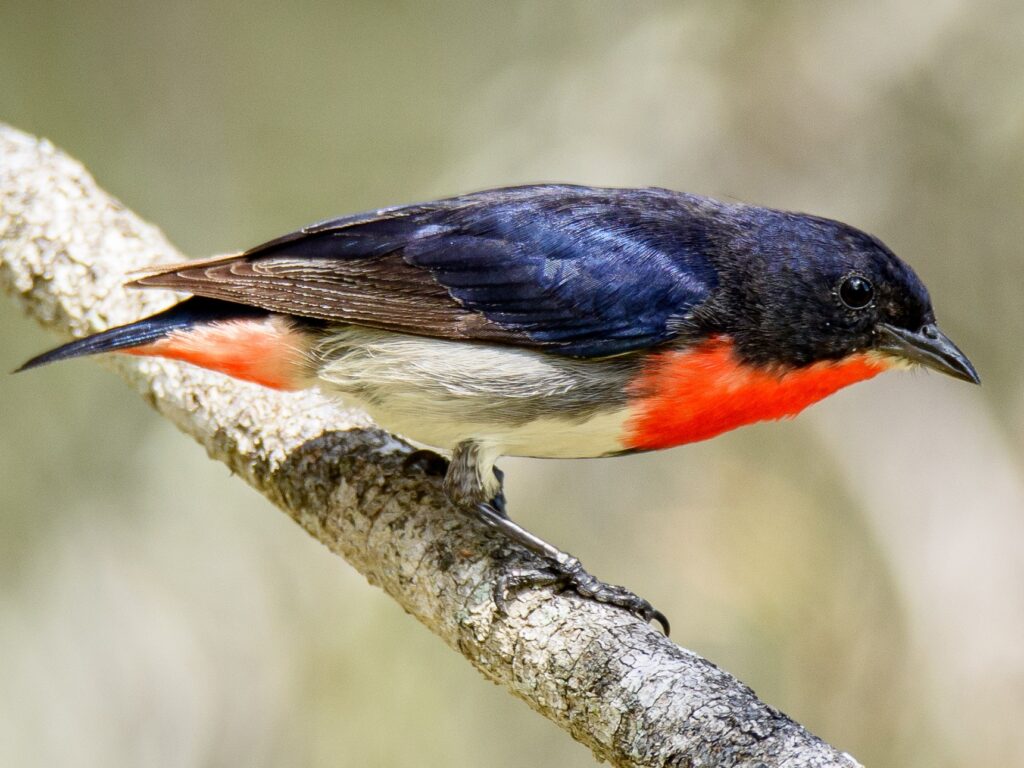
The little Mistletoebird, often called the Australian Flowerpecker, is the sole member of the Dicaeidae family of flowerpeckers that lives in Australia. Males have a bright red throat and chest, a white belly with a central dark streak, and a bright red undertail in addition to having a glossy blue-black head, wings, and upperparts. Females have a pale crimson undertail and a belly streaked with the grey that is white above. Young birds are female-like, but whiter and with an orange-coloured bill as opposed to a dark one. These birds fly quickly and erratically, alone or in couples, typically high in or above the canopy.
To its diet of mistletoe berries, the mistletoebird has developed a strong adaptation. The rudimentary digestive system it has allows it to quickly process the berries, breaking down the fleshy outer sections and excreting the sticky seeds onto branches. It lacks the muscular gizzard (food-grinding organ) of other birds. After then, the seed might quickly grow into a new plant. The mistletoebird does this to guarantee a steady supply of its primary meal. In order to feed its young, it will also catch insects.
The mistletoebird is widespread over mainland Australia and can be found wherever mistletoe is present. It plays a significant role in the spread of this plant species. Eastern Indonesia and Papua New Guinea also contain it.
Tasmanian Devil
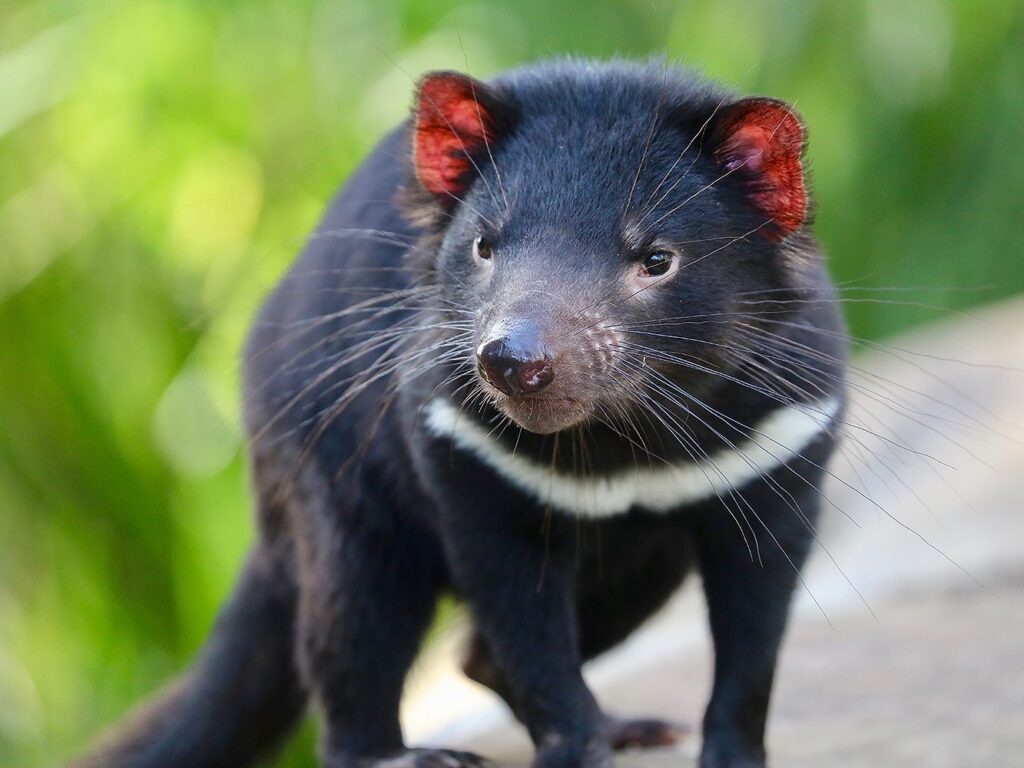
The Tasmanian Devil is listed as an endangered species in Australia. Their tail, where they store fat, may hold up to 40% of their body weight per day, thus you can gauge their health by the size of it! Although they don’t have the same terrifying appearance as other creatures in Australia, they have a bite that is so strong that it may easily break bones.
These creatures are worth viewing, despite the fact that some people may find them cute and others may find them horrifying. It is a carnivore that can only be found in the woods of Australia. The intriguing thing about its name is that these creatures were discovered in Tasmania for the first time, and due to their obnoxious yells and frightful growls, people thought they were quite diabolical. It is also known as Tasmanian Devils. In Australia, don’t miss viewing these adorable devils.
While travelling through Tasmania, you have the best chance of seeing Tasmanian devils in the wild. At Cradle Mountain-Lake St. Clair National Park, Devils Cradle, and Tasmanian Devil Unzoo, which offers a 4WD tour on which you may follow the devil’s movements, you can get up close and personal with these wild animals. There are other zoos and sanctuaries all around the country.
Echidna
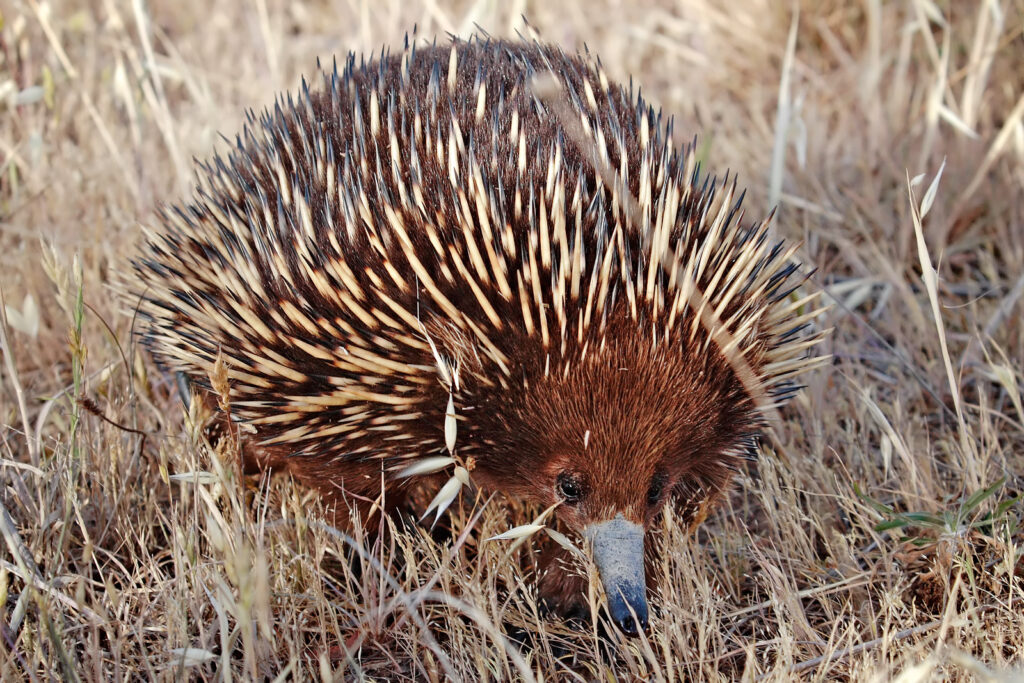
Echidnas are spiny anteaters, one of the egg-laying mammals, and among the most endangered species on the planet. One of the remaining monotreme species, the echidna has a sharp spine like a large porcupine.
Despite having a similar (but smaller) look and diet to the anteater, the Echidna, sometimes known as the spiky anteater, is not actually related to it. Termites and ants make up its food. It belongs to the monotreme order of egg-laying animals and is also a very good swimmer. With the help of its powerful and sturdy legs, the echidna can dig burrows for protection, or it can curl up into a ball and project its spines outward to scare off potential predators. But it’s still adorable!
There are four species of echidnas, including the Short-beaked Echidna found throughout Australia in places like the Great Western Woodlands.
Kookaburra
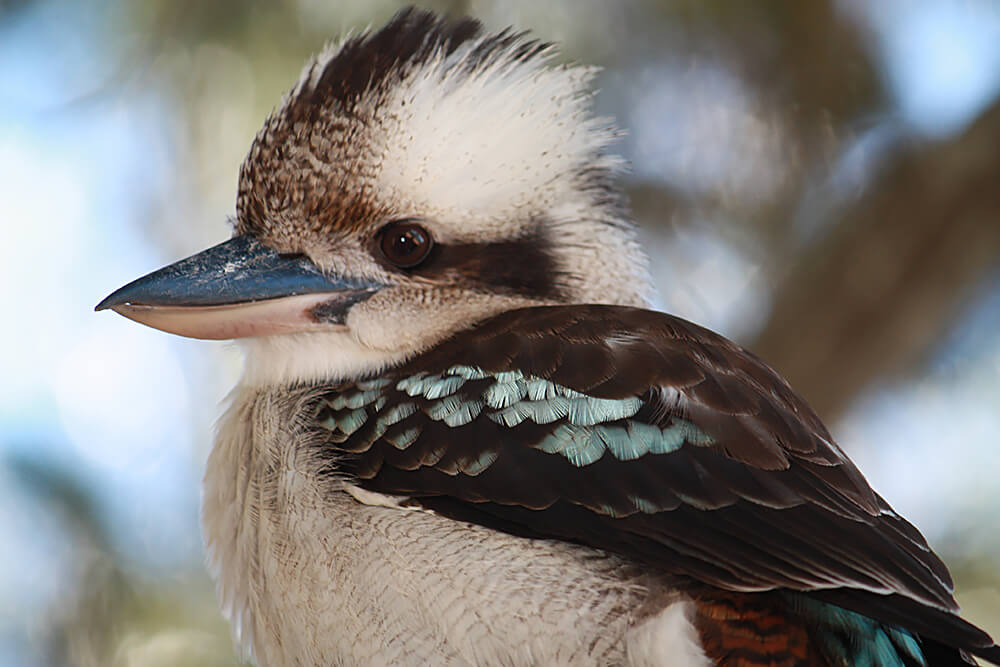
The social kookaburra is well recognised for its characteristic chuckle. In the majority of Australian woods, you can spot or hear them. The distinctive laugh-like call of these cold Australian birds makes them well-known. Additionally, they have enormous bills, which make it easy for them to swoop down from the treetops and capture their prey.
However, researchers have discovered that family members laugh similarly to one another. The kookaburra doesn’t laugh if it is kept in captivity alone because laughing is a social behaviour.
Australian Reptile Park or Featherdale Wildlife Park in NSW; Magnetic Island National Park; Taronga Zoo in Sydney; Kangaroo Island in South Australia; Australia Zoo in NSW; Australian Reptile Park in NSW; and Australia Zoo in NSW are some of the top tourist destinations throughout the country. Kookaburras can claim large trees as their own in all settings.
Numbat
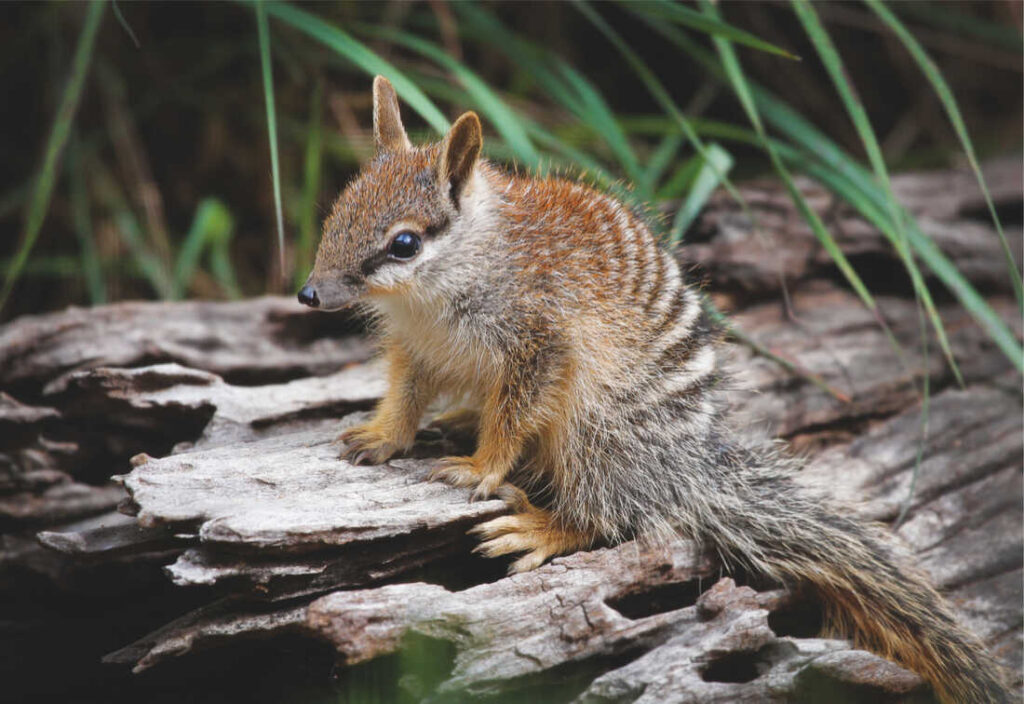
The Numbat is an Australian protected species that is a small marsupial that survives in southwest Western Australia. Due to its small size, the Numbat is hunted by many animals like feral cats, foxes, dingoes and birds of prey. Because it is solely on termites which are active by day, the Numbat is the only diurnal (opposite of nocturnal) marsupial.
Using its 4-inch tongue, the Numbat only consumes termites. These territorial, lonely Australian critters travel great distances to get food. They don’t require water, like other species of the Australian desert. The moisture they need comes from the termites they eat.
It spends nights hiding in hollow logs or burrows that are too narrow for its predators to enter. To further protect itself from predators at night, it uses its very thick-skinned rump to block the entrance. Now that’s using your behind to get ahead.
Pellucid Hawk Moth
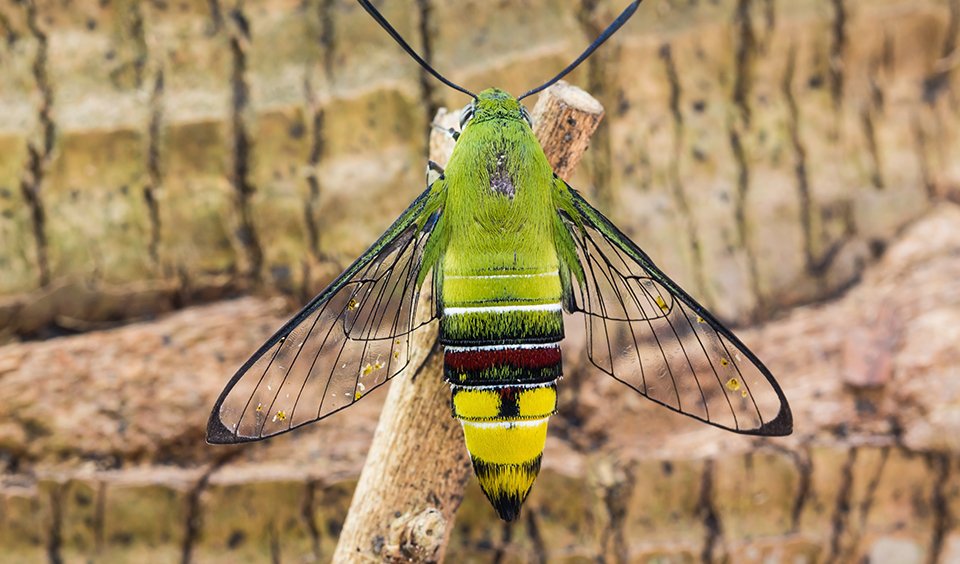
The Pellucid Hawk Moth looks partly moth, partly cicada, and partly Glasswing Butterfly. According to Australian Geographic, very few species of Lepidoptera, the insect order which includes all butterflies and moths, have scaleless, transparent wings.
Coloured wings can serve many functions, including communication, defence, thermoregulation, feeding, and waterproofing. So why the transparent wings? It’s thought these wings reflect about 50% less light than opaque ones, rendering the wings almost invisible in flight. It’s like an invisibility cloak which makes it a great defence against becoming prey.
Closing Words
The climate and huge terrain of Australia are as distinctive as the animals that inhabit it. And despite Australia’s abundance of lethal and dangerous creatures, you shouldn’t worry about them because everything has been done to ensure that everyone is safe.
Climate change and the effects of land clearing, which are tragically affecting Australia’s animals, should be our top priorities when it comes to conserving these species.
According to research, up to 33% and 56% of already categorized as endangered species of Australia, and they are at risk from urban growth and climate change, respectively. Building a sustainable future is therefore more crucial than ever.
You can help maintain the natural ecosystem not just in Australia but all over the world by identifying tiny methods to reduce climate change and global warming.
The post 9 Beautiful and Rare Species Found Only in Australia appeared first on TheAussieway.
]]>The post The Best Places To Visit In Australia For Wildlife Enthusiasts appeared first on TheAussieway.
]]>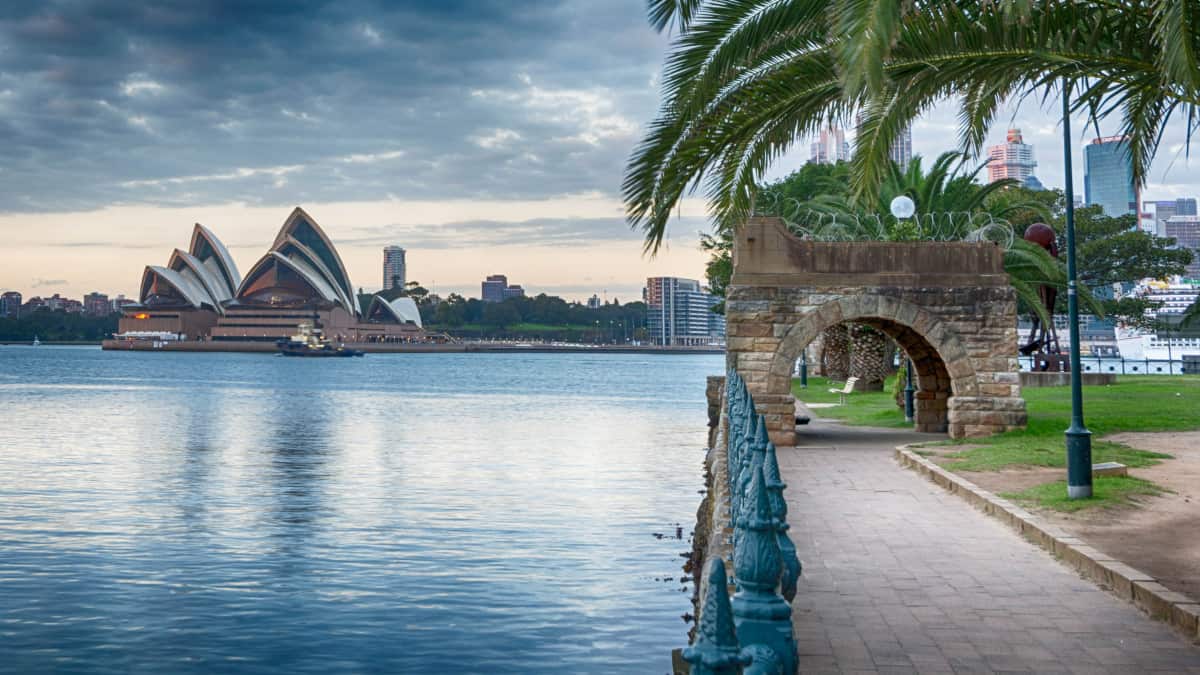
Australia is blessed with lovely sunny weather, spectacular natural landscapes, good wine, and a friendly, laid-back population. It is also well known for its unique flora and peculiar creatures, many of which are unique to Australia, like bioluminescent glow worms.
The phrase “our land abounds in nature’s gifts of beauty, rich and rare” from Australia’s national anthem describes the picture. Wildlife enthrals those who adore the outdoors. With millions of visitors each year, an increasing number of local and foreign visitors direct their animal senses toward some of the most well-known Australian wildlife areas. Numerous of these famous locations are also among Australia’s most attractive places to visit.
Endangered wildlife abounds, including the well-known koala and the vicious Tasmanian devil, as well as less well-known species like the echidna, bandicoot, quoll, and fairy penguin. But how can you even start to see Australian creatures in the wild in such a big country?
Whales and sharks Whether you like dolphins, penguins, camels, or horses as your favourite wildlife species, we have found the most incredible locations and unforgettable experiences for the greatest Australia wildlife holidays for animal lovers.
The Great Barrier Reef

This enormous structure, which is visible from space, is situated not far from Queensland’s shore. The reef, which stretches over 2300 kilometres, is home to numerous fascinating and endangered species. These seas are home to a wide variety of marine life, including clownfish, mantis shrimp, dugong, humpback whales, whale sharks, green turtles, blanket octopuses, and many others. You should have no trouble visiting this World Heritage Site if you want to dive, snorkel, or swim in the Great Barrier Reef and get up close and personal with some of the animals that dwell here because it is reachable by land, sea, and air.
More than 500 varieties of coral, more than 100 shark and ray species, six species of marine turtles, more than 30 species of marine mammals, and more than 215 bird species can all be found on the Great Barrier Reef.
You can cruise Michaelmas Cay, fly over Heart Coral, cruise Agincourt Reef, stay on Herron Island directly on the reef, or take a seaplane over Agincourt Reef to experience this astounding richness of species. A variety of lodging options are available that provide access to the Great Barrier Reef‘s stunning wonders.
Ningaloo Reef and Exmouth
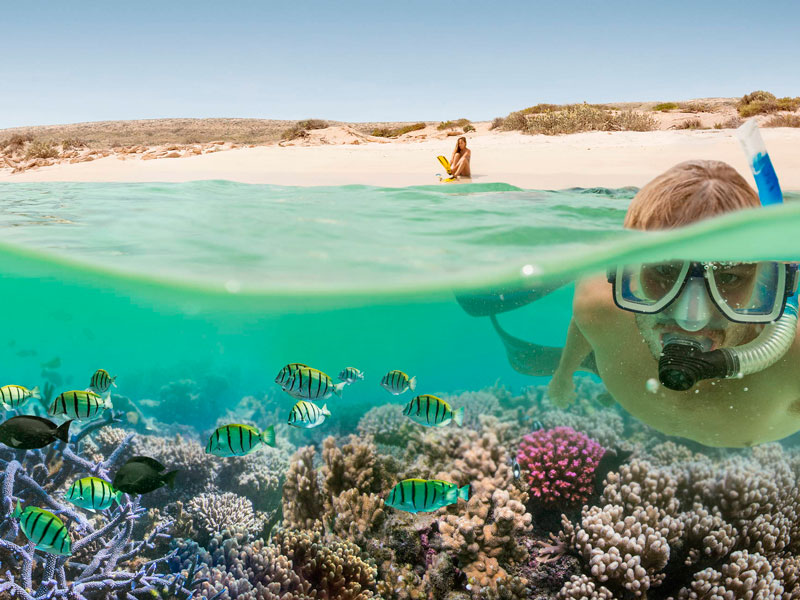
The finest wildlife location in Australia to see whale sharks is here. Additionally, visible are manta rays and, of course, all the other reef dwellers. You want to go to Ningaloo Reef when you eventually find yourself in Western Australia. You will have the chance to go diving among some of the most beautiful marine life in existence at this World Heritage Site. For instance, Ningaloo Reef is home to the whale shark, the largest fish in the world. They are harmless, but they will undoubtedly make you gasp for air. Turtles, manta rays, and a variety of tropical fish live on the bordering coral reef.
Marine life loves Ningaloo Reef, which is their paradise. Every year, from April to July, whale sharks gather in enormous numbers in this one location alone, close to the beach. Information on the various trip choices for seeing these marine giants is available from the Exmouth Visitor Center.
In addition to the whale sharks, the reef is also home to six different kinds of sea turtles and manta rays. On their annual migrations between their breeding grounds in the warm tropical waters and their feeding sites in Antarctica, humpback whales stop at Ningaloo Reef.
The biodiversity at Daintree Rainforest, Queensland
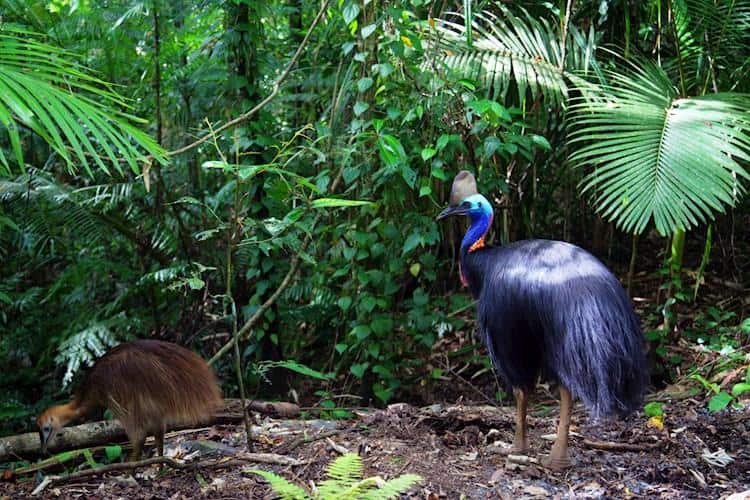
The Daintree Rainforest in northern Queensland is the oldest rainforest on Earth and is home to a wide variety of unique plants and animals. It’s one of the best sites in Australia to watch animals because of this. Cassowaries, bandicoots, musky rat-kangaroos, rufous owls, sugar gliders, huge tree frogs, and many other animals can be found in this 180 million year old jungle.
BirdLife International has designated the Daintree Rainforest as an Important Bird Area (IBA), primarily due to the presence of a population of southern cassowaries there. Two endemic species of bowerbirds, gorgeous fairywrens, fernwrens, owls, kingfishers, and several other bird species all have habitat thanks to it.
It serves as a reminder of Australia’s hot, muggy past, which occurred millions of years ago, before the continent’s climate started to get drier and hotter. Choose a guided tour so that your knowledgeable guide can locate and point out the local fauna. Alternatively, maybe a river cruise through the mangroves is more your style.
Kangaroo Island
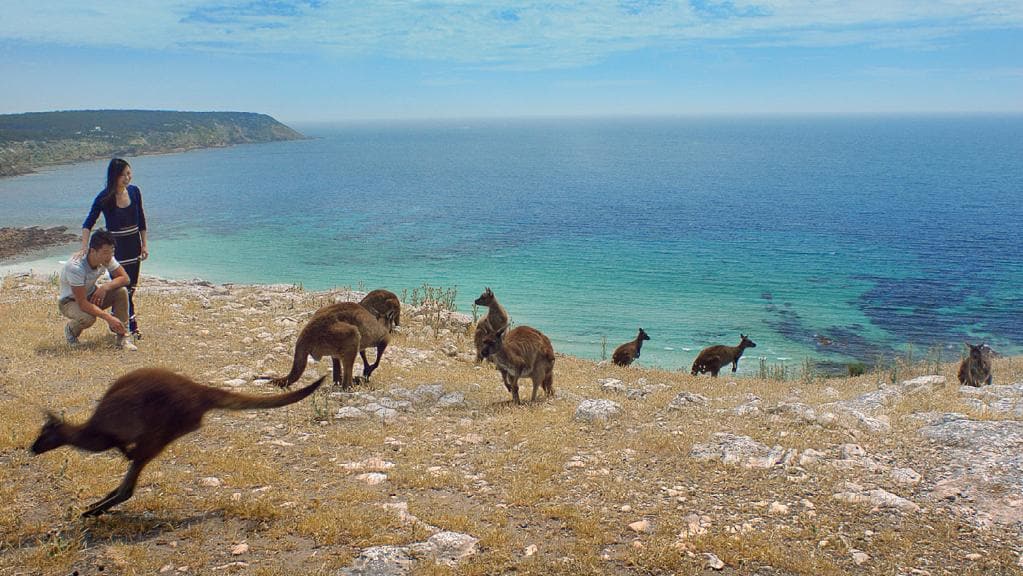
Kangaroo Island is a fantastic location to find wildlife in Australia where you may see animals and is home to kangaroos, birds, seals, sea lions, koalas, and many more.
It’s home to a variety of animals. This island is home to a variety of natural animals, including the Kangaroo Island kangaroo, the southern brown bandicoot, the short-beaked echidna, and six different types of bat and frog. Visit Hanson Bat Wildlife Sanctuary to observe koalas, wallabies, kangaroos, and more than 40 different bird species. Seal Bay is the place for you if sea lions are more your style. Kangaroo Island is easily accessible by ferry from Adelaide, and more than a third of it is protected as national parkland.
Some of the must-see locations are Seal Bay, where you can see sea lions, Admiral’s Arch, where you can see fur seals, Flinders Chase National Park, where you can see echidnas, platypus, and Cape Barren geese, American River, where you can see sea colonies, and Little Sahara, an island-wide area with dunes.
On Kangaroo Island, you can book accommodations where the amazing animals can be viewed out your window or even just outside your door. For information on the top animal locations on Kangaroo Island, go to this trip report.
Kakadu National Park
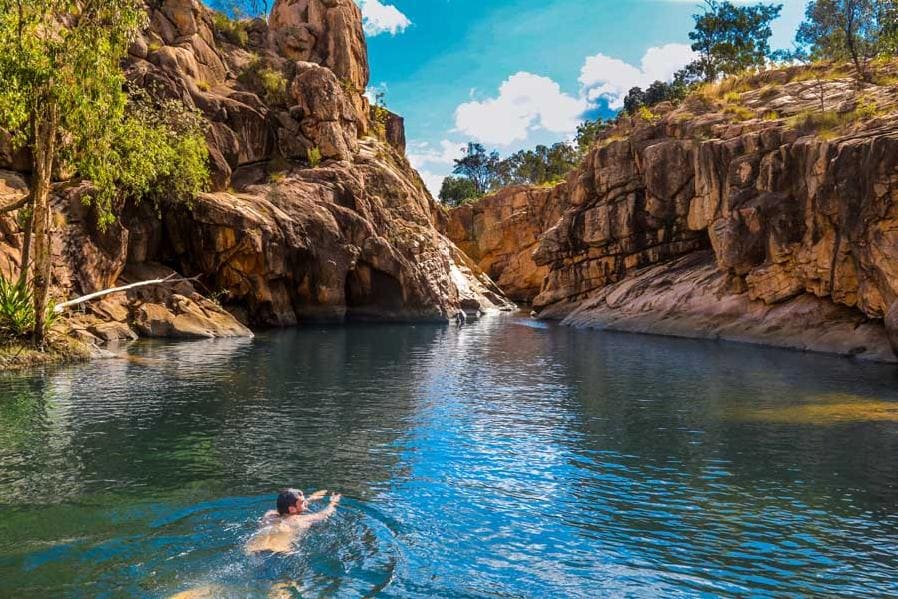
Kakadu National Park, which is situated in the Northern Territory, is a place with a unique ecosystem and biological population that you should not skip visiting. This protected national park has a great concentration of animals due to its four river systems, six primary landforms, including estuaries, lowlands, and stone country. For instance, Kakadu is home to 280 bird species, 117 reptile species, and about 70 mammal species, many of which are uncommon and endangered. The biodiversity of this area is simply breathtaking, with species like the Australian darter, the red goshawk, the distinctive frill-necked lizard, and the nimble wallaby.
You might not be able to see all the animals you were hoping to observe due to the sometimes harsh weather conditions and the fact that many of the species are nocturnal. There are no commercial flights to the national park, so the only way to get there is to travel to Darwin or Alice Springs and then drive from there. Everything from camping to hotels and cabins is accessible in terms of lodging.
There are 90- and 120-minute cruises along the Yellow Water Billabong offered by Yellow Water Cruises. Numerous species of wildlife are present throughout the vast marshes. Kakadu is, therefore, the place to go if you enjoy a daring trip close to crocodiles that eat flesh.
The Penguin Parade on Phillip Island
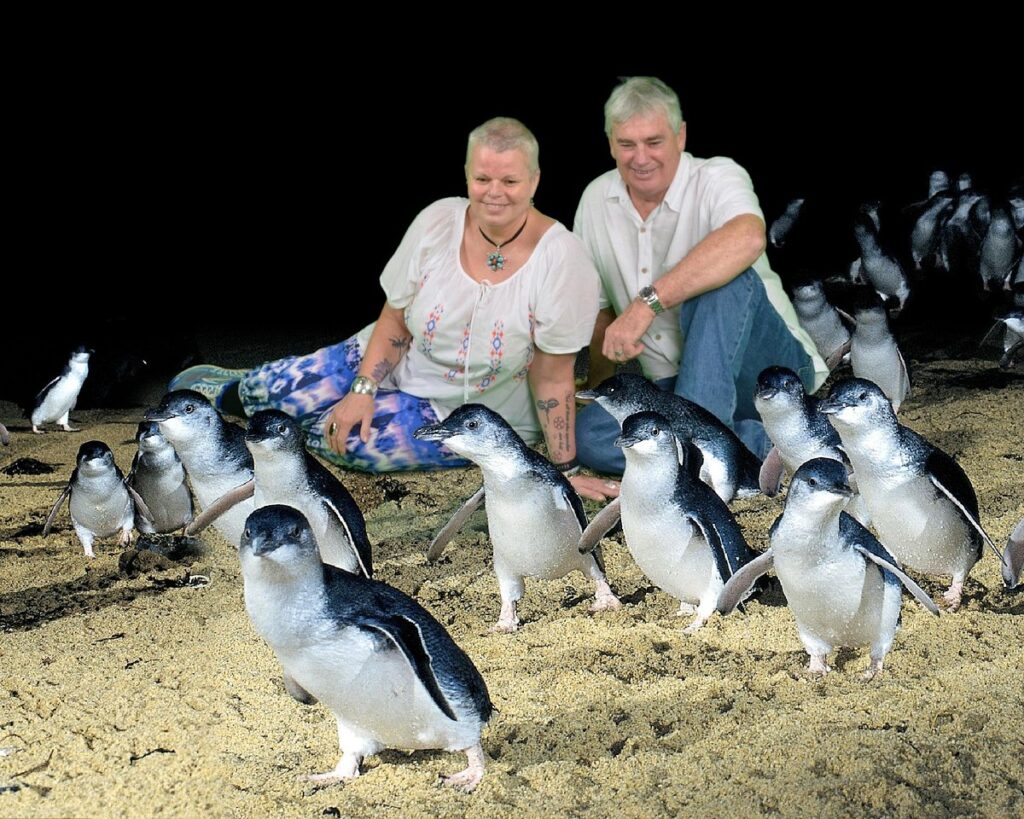
The Phillip Island Circuit attracts a lot of motorcycle and auto fans, but this southern Victorian coastal location is best known for its Summerland Beach sunset penguin parade. The Seal Rocks outcrop, which is home to a sizable colony of Australian fur seals, may be seen from the Nobbies outcrop. You won’t ever be too far from all the tourist action and fantastic family attractions in Phillip Island thanks to the abundance of lodging options.
One of the best spots in the world to get a close-up look at penguins is Phillip Island, which is 90 minutes from Melbourne and not too far from anywhere else. After a challenging day in the ocean, the small creatures waddle along the beach to their burrow while grooming and interacting with one another. Additionally, the Koala Conservation Center is located on this island, allowing you to snap pictures of these adorable little creatures as well. As previously indicated, Phillip Island is accessible by day trip from Victoria’s city centre.
Dingoes in Queen’s Fraser Island
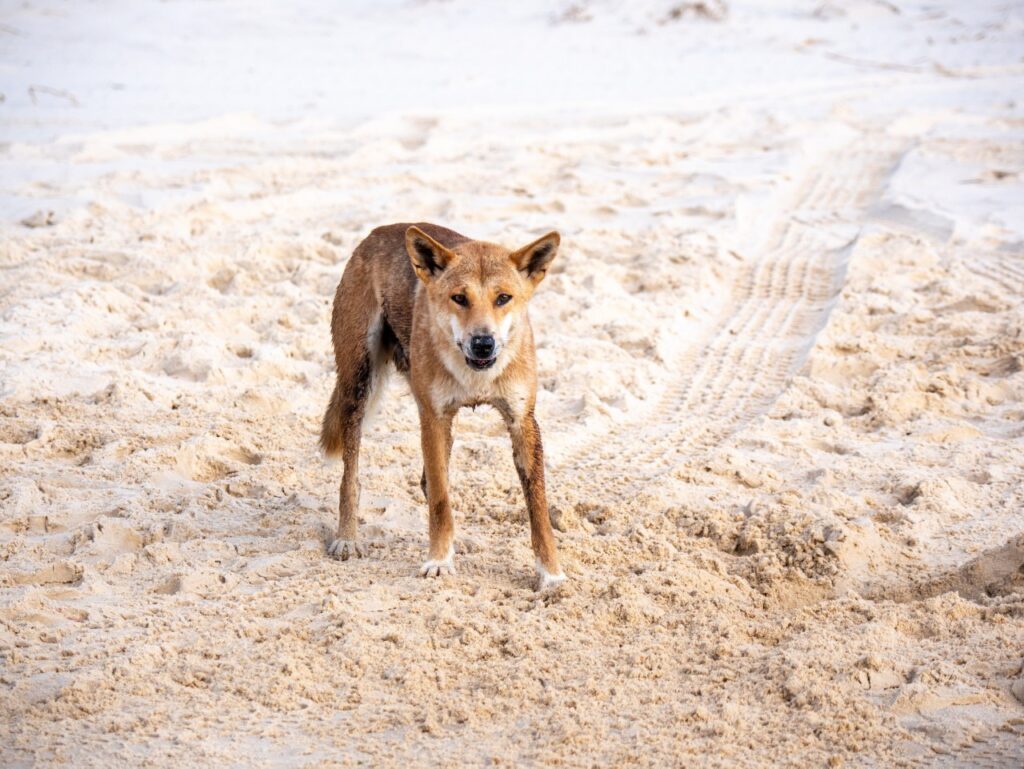
One of the best spots to find wildlife in Australia is K’gari(Fraser Island). You will be able to see dingos, which are typically elusive. While camping, you may encounter several marsupials at night. Along with its neighbour, Hervey Bay, Fraser Island is the nation of Australia’s whale-watching capital and the largest sand island in the world, measuring more than 120 kilometres. This eco-tourism location also offers plenty of animal viewing possibilities, including the chance to witness local dingoes, as well as swimming options at beautiful beaches and on Lake McKenzie. On Fraser Island, in the tranquil natural surroundings, there are reasonably priced resorts.
Although the most well-known dogs in Australia may be seen all over the country, Fraser Island in Queensland is one of the best spots to watch them. The dingoes roam freely along the beaches of Fraser Island, the largest sand island in the world. Since Fraser Island dingoes have not interbred with feral dogs as frequently as other mainland populations, they are thought to be the purest strain of dingo in Australia and are therefore legally protected. Do keep in mind that dingoes are wild animals that, despite belonging to the canine family, can be violent toward humans. Watch them from a safe distance, please!
The island state of Tasmania
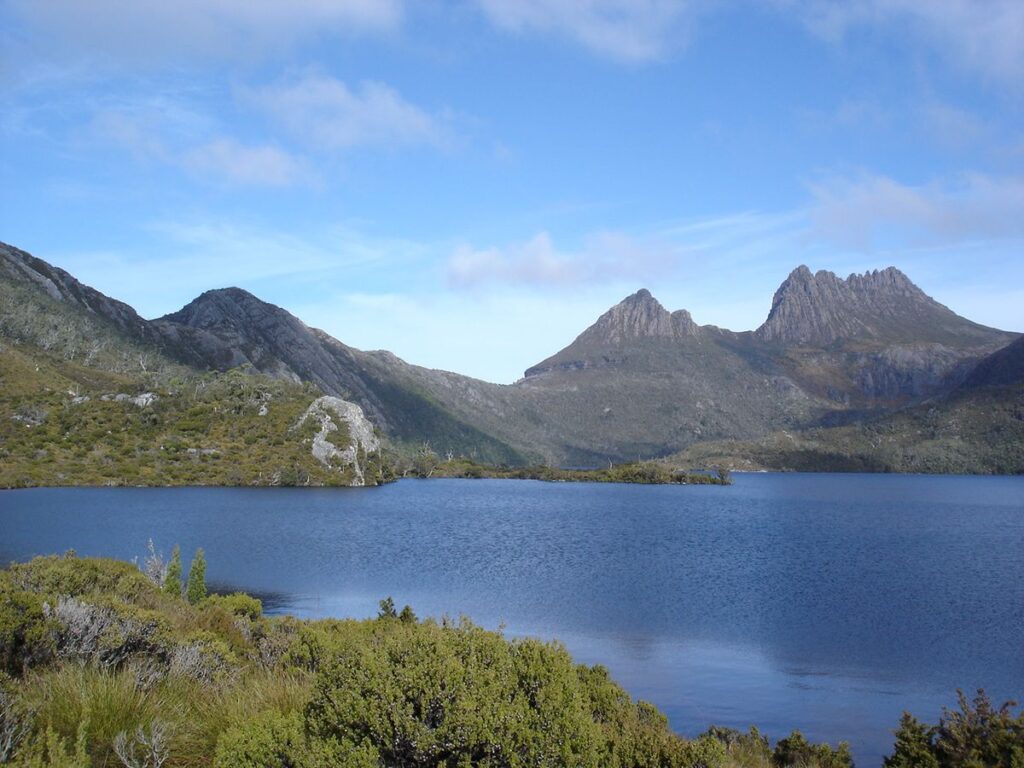
Tasmania is the only location where Tasmanian devils can be found in the wild. To conserve their dwindling population, 28 healthy Tasmanian devils were sent to Maria Island in 2013 for a captive breeding operation. Currently, the island is home to roughly 100 of these tiny carnivorous marsupials.
At the entrance to Tasmania’s Cradle Mountain National Park, which is a World Heritage Site, is a conservation sanctuary. Visitors have the option of exploring the refuge at their own pace or signing up for a private guided tour that guarantees a close encounter with a Tasmanian Devil. Your visit will give you a glimpse into how a working facility for animal conservation runs daily and your admission charge will go toward the Tasmanian Devil’s preservation.
A road trip to Tasmania will undoubtedly include plenty of wildlife sightings. Sometimes more than you anticipated because it makes driving a stressful activity. Some of the best locations to find wildlife in Australia to witness animals like wombats and echidnas include Maria Island and Cradle Mountain.
The post The Best Places To Visit In Australia For Wildlife Enthusiasts appeared first on TheAussieway.
]]>The post Top 5 Amazing Islands To Visit Great Barrier Reef appeared first on TheAussieway.
]]>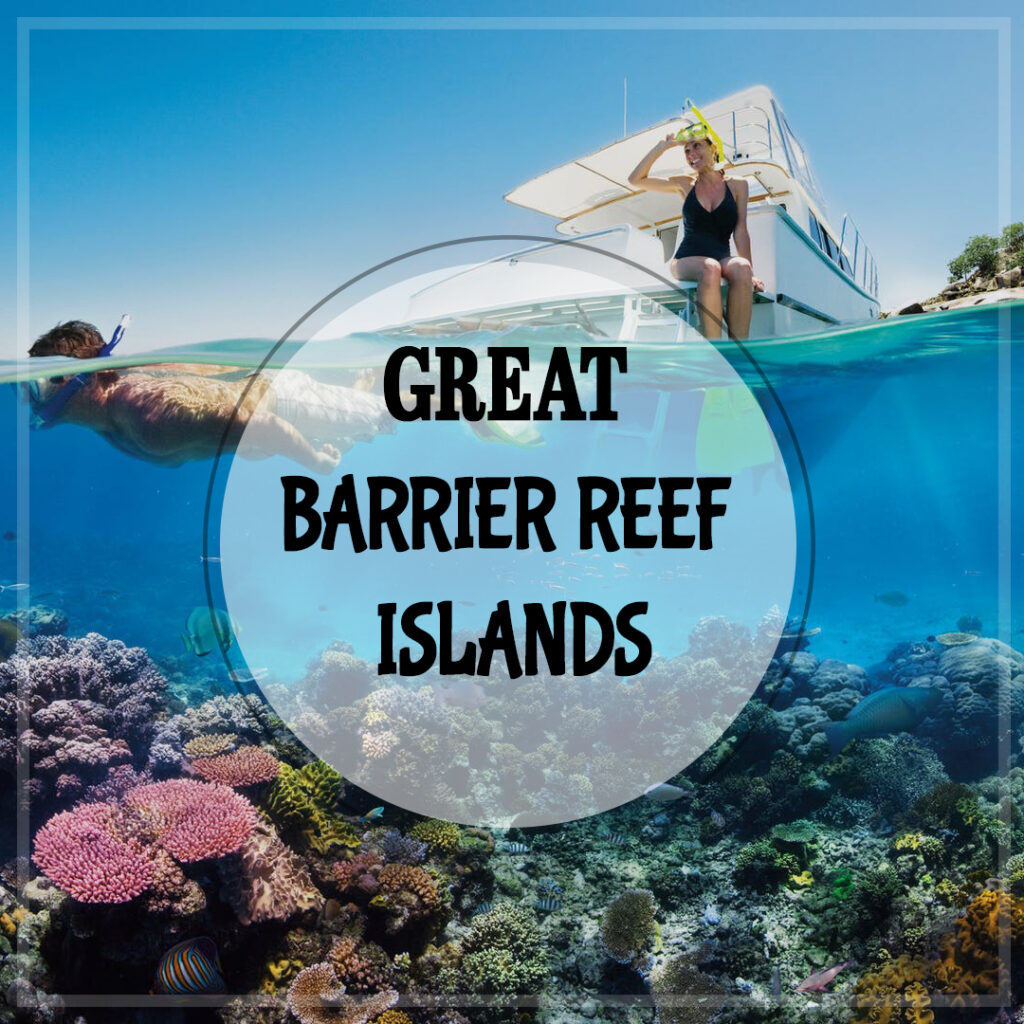
Dive deeper into this beautiful part of Australia and experience the stunning Great Barrier Reef for yourself.
The Great Barrier Reef in Queensland is undeniably one of the top tourist attractions in Australia. With a vast expanse stretching over 2,300 kilometres along the Queensland coast, this UNESCO-listed wonder is visible from space and draws millions of visitors annually.
Boasting more than 900 islands and coral cays, the reef is home to an astonishing variety of marine life. Whether you’re exploring vibrant coral gardens, spotting majestic sea turtles, or enjoying snorkeling in the Great Barrier Reef, there’s no shortage of unforgettable experiences.
If you’re planning a visit, here are the top five islands to explore, each offering unique experiences and breathtaking scenery.
Whitsunday Islands
The Whitsundays, often ranked among Queensland best beaches, is an archipelago of 74 tropical islands off the coast of central Queensland. With thousands of visitors and travellers coming from near and far every year, the Whitsundays hold an abundance of natural wonders and stunning holiday spots.
Lush island marine scapes, wondrous underwater ecosystems and perfect tropical temperatures are all found in this slice of paradise.
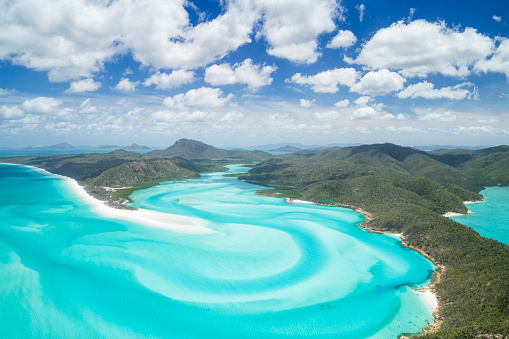
Why Visit?
- Whitehaven Beach – Consistently ranked among the world’s best beaches, Whitehaven’s 98% pure silica sand is powdery soft and remains cool underfoot.
- Hill Inlet – A spectacular viewpoint where the tides create a mesmerising swirl of white sand and turquoise water.
- Sailing Adventures – The Whitsundays is a premier sailing destination, offering overnight yacht charters and guided boat tours.
- Diverse Marine Life – Home to vibrant coral gardens, dolphins, sea turtles, and a variety of reef fish.
Best Activities
- Snorkeling and scuba diving at Hook Island or Hardy Reef
- Scenic flights over Heart Reef
- Overnight stays at luxury resorts like qualia on Hamilton Island
Lady Musgrave Island
One of the Great Barrier Reef’s biggest swimming pools, Lady Musgrave Island’s untouched beauty extends from land to sea. Located only 52km from Bundaberg, this tiny coral cay measures just 19.45 hectares in size and is one of the best places to visit in Queensland.
But what Lady Musgrave Island lacks in land size, she makes up for off-shore with a vast surrounding reef that’s brimming with marine life and colourful coral.
Why Visit?
- World-Class Snorkeling & Diving – One of the best spots for snorkeling in the Great Barrier Reef. Explore the turquoise lagoon, coral bommies, and diverse marine species.
- Turtle Nesting Grounds – Between November and March, Green and Loggerhead turtles come ashore to lay eggs.
- Unspoiled Camping Experience – As part of the Capricornia Cays National Park, visitors can camp under the stars with minimal human impact.
Best Activities
- Snorkeling and diving with manta rays, reef sharks, and vibrant coral fish
- Glass-bottom boat tours for a unique underwater perspective
- Kayaking and stand-up paddleboarding in the protected lagoon
Whitehaven Beach
One of Queensland’s best beaches and the dream-like paradise of Whitehaven beach is a spectacular 7km stretch of impossibly white sand located on Whitsunday Island.
The astonishingly white sand of Whitehaven Beach is the most extensive stretch of beach in the Whitsunday region. The sand is 98.9% pure silica, whereas typical beaches have sand with around 95% silica!
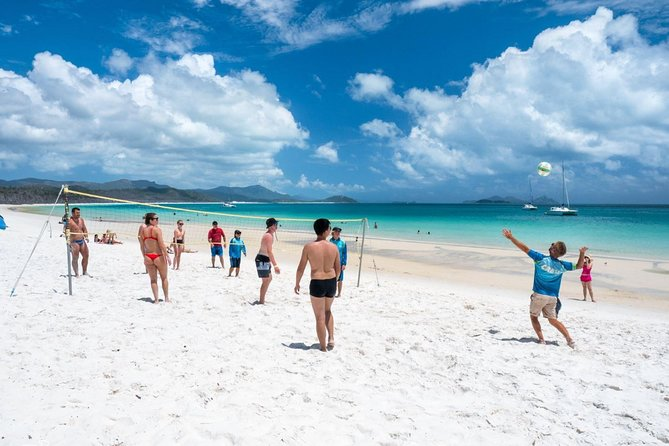
Whitehaven Beach should be on the bucket lists of travellers worldwide with thousands making the journey in 2022.
Why Visit?
- Incredible Sand & Water – The bright white silica sand contrasts stunningly with the crystal-clear turquoise waters.
- Hill Inlet Lookout – One of the most photographed locations in the Great Barrier Reef, offering panoramic views of swirling sands.
- Protected & Pristine – As part of Whitsunday Islands National Park, Whitehaven remains untouched by commercial development.
Best Activities
- Swimming and sunbathing on the soft silica sands
- Hiking to Hill Inlet Lookout for breathtaking views
- Taking a seaplane or helicopter tour for an aerial perspective
Fitzroy Island
Fitzroy Island is one of the best tropical islands in North Queensland. Located just a short ferry ride from Cairns, there’s no reason why anyone should miss this tropical gem when visiting Cairns and the Tropical North.
Whether you’re looking to spend an action-packed day trip from Cairns, or if you’d like to spend several days on Fitzroy Island exploring, you certainly won’t be disappointed.
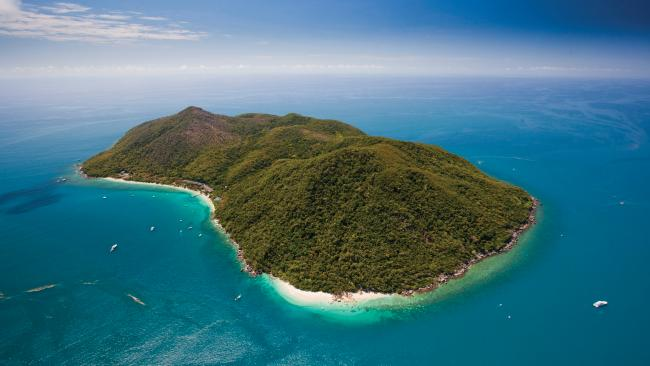
Why Visit?
- Accessible Yet Untouched – A quick trip from Cairns but still rich in natural beauty.
- Fitzroy Island National Park – Features hiking trails, dense rainforest, and stunning coastal views.
- Snorkeling Directly Off the Beach – Explore fringing reefs with clownfish, giant clams, and sea turtles.
Best Activities
- Hiking the Summit Track for panoramic views
- Visiting the Cairns Turtle Rehabilitation Centre
- Jumping on the Giant Ocean Trampoline for some fun in the sun
Lizard Island
Lizard Island is Australia’s northernmost island beach resort and the ultimate spot for luxurious seclusion, facilities and diving. Located 240km north of Cairns on The Great Barrier Reef.
The island is a protected National Park, with just one exclusive resort, 40 rooms and suites, and 24 pristine sandy beaches.
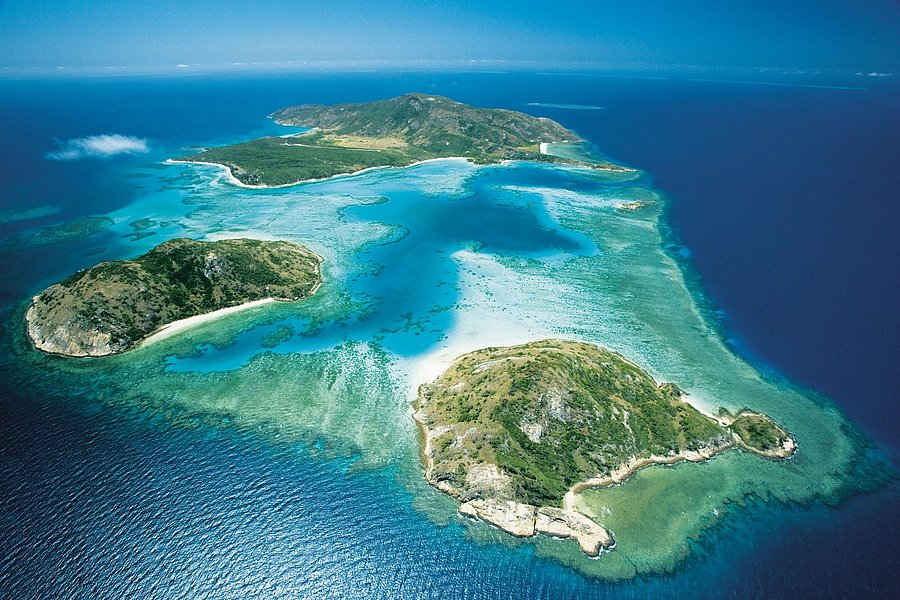
Why Visit?
- Unparalleled Seclusion – With only one luxury resort, the island is an intimate retreat for couples and honeymooners.
- Cod Hole Diving Site – One of the most famous dive sites in the world, where divers can encounter giant potato cod up close.
- Pristine Beaches & Turquoise Waters – The island has over 24 private beaches for ultimate relaxation.
Best Activities
- Luxury resort experiences at the Lizard Island Resort
- Diving and snorkeling at the world-renowned Ribbon Reefs
- Kayaking and paddleboarding in the serene waters
Whether you’re planning to sail, snorkel, dive, or relax on Queensland top attraction, the Great Barrier Reef island experience is unlike any other.
The Great Barrier Reef is home to countless marine life, in fact around 10% of the world’s fish population can be found along this coastline alone! Amongst the more than 1500 species of fish found here are many fan favourites, including the unmistakable clownfish and blue tang, also known as Nemo and Dory. So do not forget to jump right in!
For more inspiration on the best Great Barrier Reef tourism islands for you, check out this family-friendly island guide so you don’t forget to visit the best one next time!
The post Top 5 Amazing Islands To Visit Great Barrier Reef appeared first on TheAussieway.
]]>The post 10 Top Locations To Visit On The Mornington Peninsula appeared first on TheAussieway.
]]>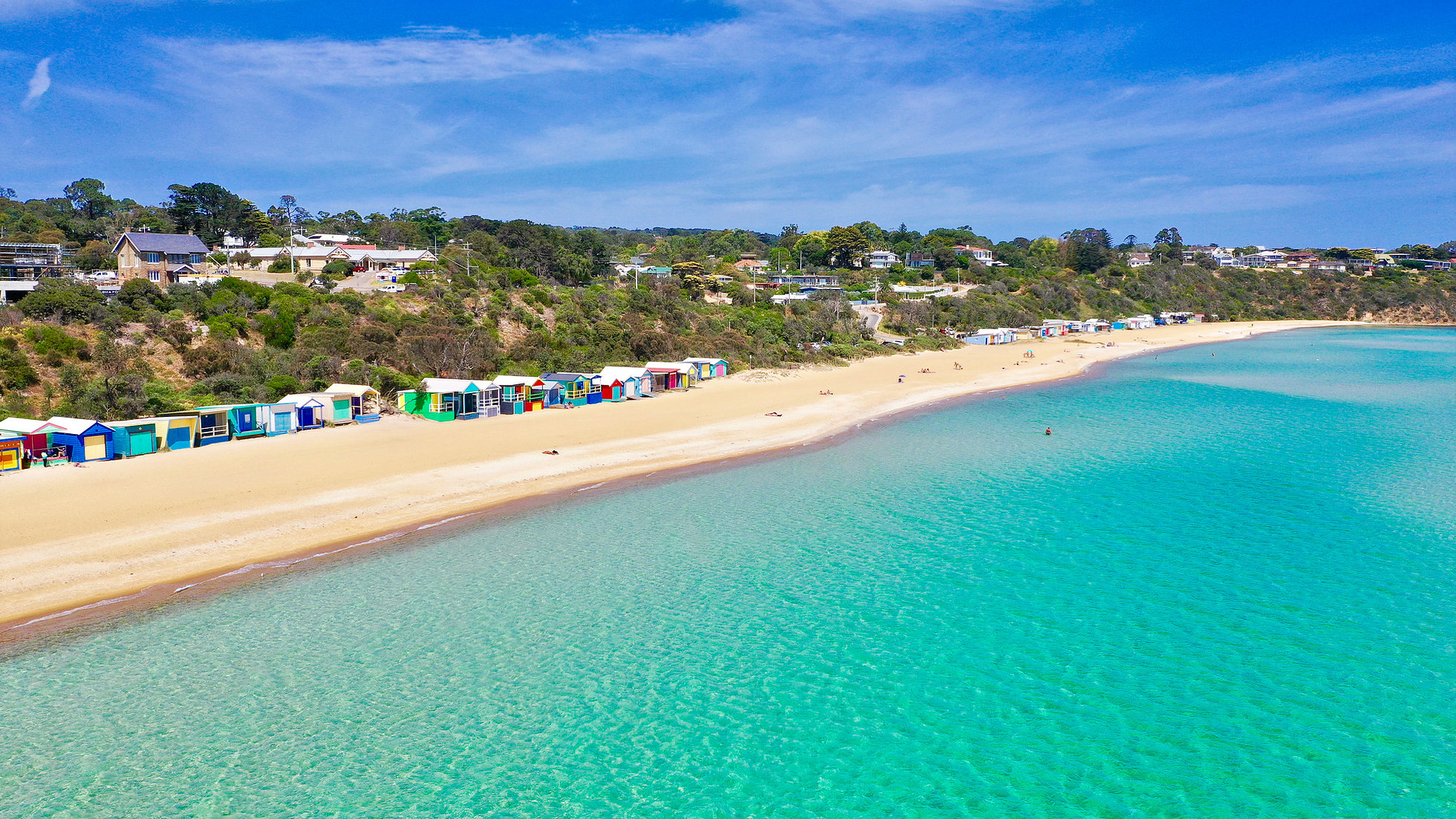
Just jump away from bustling Melbourne, and one will find loads of amazing spots on the Mornington Peninsula. These are our absolute faves, which you must check out too to take a coastal getaway to the Mornington Peninsula.
We have personally visited these spots and made memories around them. Let us take a look at the 10 hot Mornington Peninsula places to visit, even if you are visiting for the first time. Let’s go!
1. Mount Martha Beach Boxes
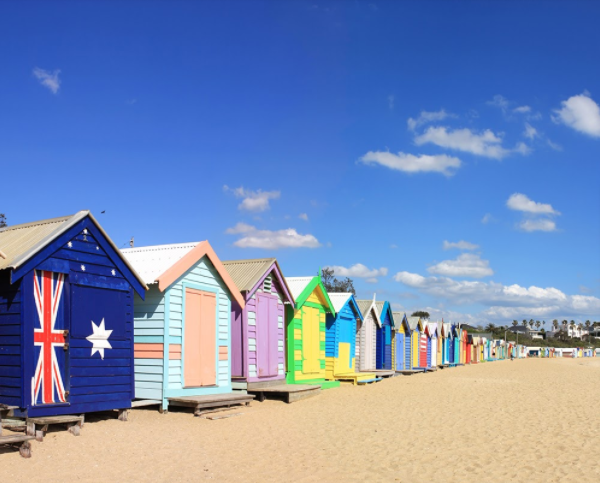
You have probably heard of the famously colourful Brighton Bathing Boxes. Well, they are scattered all along the beaches of the Mornington Peninsula. Some of our favourites though are found along idyllic Mount Martha Beach, a pristine beach with vivid turquoise water.
These things sell for over $400,000 each and owners do them up to show them off in their own unique way. You’ll find rustic to vibrant and all things in between, some even have awesome artwork on them!
2. Fort Nepean
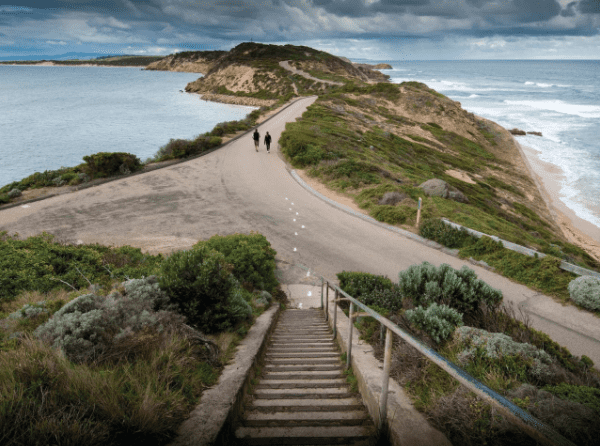
Fort Nepean is located at the very tip of the Mornington Peninsula and gives stunning views of Port Phillip Bay and the wild ocean. You can either walk 2.5km from the car park to the historic fort or jump aboard a shuttle bus.
We opted for the walk and it was a fairly easy walk even with Ollie in his pram. You’ll find loads of old forts and gun areas that you can explore throughout Point Nepean National Park, but be careful walking off track as the signs point out “unexploded land mines”!
Fun fact, even though miles from the battlefronts of WWI and WWII, this fort apparently fired off the first shots of BOTH wars! The eager military was unable to identify ships both times and after giving warnings, sent warning shots.
3. London Bridge
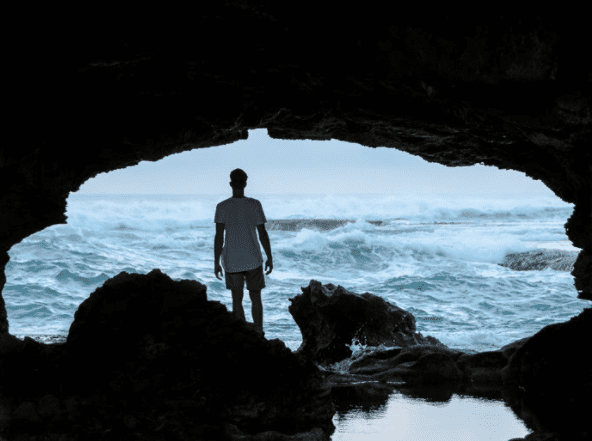
Located near the end of the Mornington Peninsula near Sorrento on the ocean side, you will find London Bridge. A unique rock formation not to be confused with the similarly named actual bridge in London.
Definitely try to tie in your visit with low tide to get down on the beach and explore the rocky outcrop!
4. Cape Schanck
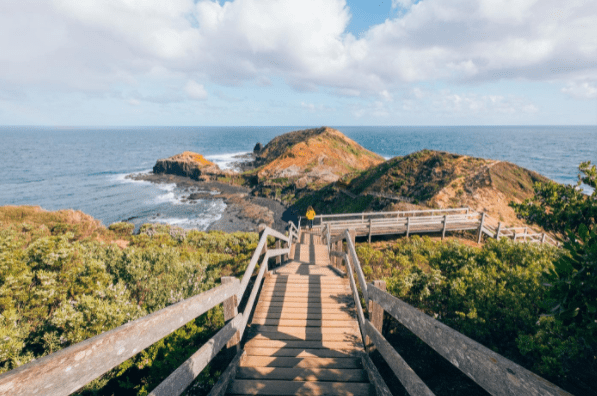
Cape Schanck is like an apocalyptic world and one of the best Mornington Peninsula exposure sites. Facing out over the wild Bass Strait and open ocean you will be faced with insane views. There are actually quite a few amazing spots here, and it’s easy to see why it’s one of the most popular spots on the Mornington Peninsula.
As soon as you get out of the car, a super short stroll will have you at the picturesque Cape Schanck lighthouse. Continue around the trail and there is a lengthy boardwalk and lots of stairs down to the beach. However, they look like an awesome spot to cool off on a warm day.
Continuing around the pebbly beach you will come to the iconic Pulpit Rock. We spent ages just sitting there watching the waves wash over the rocky outcrop and recede back to the sea.
5. The Pillars
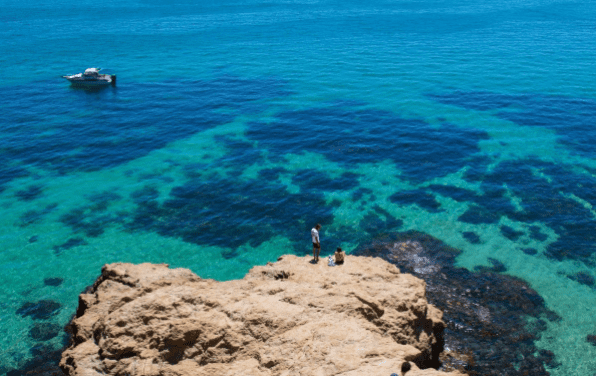
Over recent years the Pillars have gained significance on social media and are responsible for a huge tourist attraction Victoria in the area. They are definitely one of the most breathtaking spots on the Mornington Peninsula, but also just an awesome place to spend the day.
Located just off the main road, you have to walk down through the scrubby bushland, and down to the limestone cliffs. Then it gets a little bit tricky, you have to find a suitable path down! Once you make it down though you are rewarded with an amazing limestone platform leading to the crystal-clear sparkling water.
On warm days there could easily be 100 people here hanging out and soaking up the sun. It’s the Mornington Peninsula’s answer to the coastlines of Portugal.
6. Shelly Beach
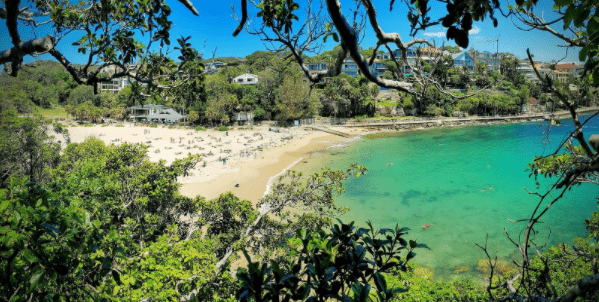
There’s a reason the mega-rich settle in Portsea. The beaches are pristine with clear water straight from a postcard. Shelly Beach is no exception and a great spot to spend the afternoon.
You’ll spot a few ‘luxury’ versions of the classic beach huts, with their own private jetties. However nobody is usually at them and you can pose for a few photos, or maybe spend the afternoon there!
7. Peninsula Hot Springs
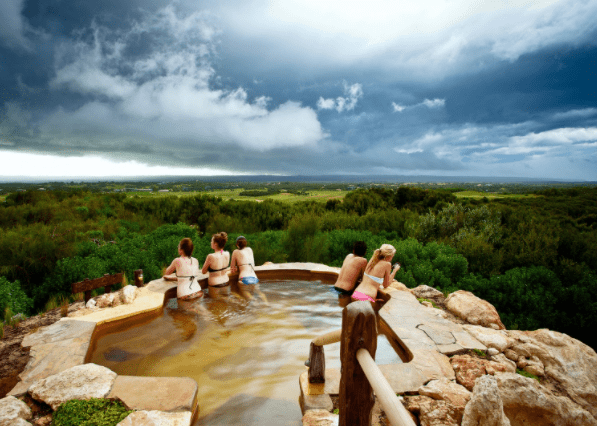
The Mornington Peninsula tour is incomplete if you don’t come here. The Peninsula Hot Springs is the only paid item we have on our most useful spots on the Mornington Peninsula list. You’ll find loads of unique pools scattered over a large area, scattered amongst a mass of vegetation.
The coolest is the small hilltop pool, perched on top of a hill with epic 360-degree views. There’s even a Moroccan-style steam room and saunas. The Peninsula Hot Springs also has private bathing areas for those seeking something even more special.
Be aware this place gets insanely busy, so make sure you go early to beat the crowds.
8. Balcombe Estuary Boardwalk Circuit
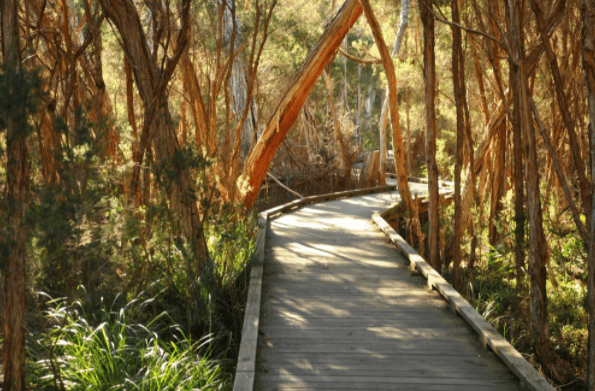
This tranquil boardwalk is found just off the Mount Martha strip. You can walk alongside Balcombe Creek on top of a raised pram-friendly boardwalk. There are a few picturesque rest stops along the way and you will feel like you are in the middle of the Aussie bush.
We try to do this walk often as it’s super gentle but you feel great doing it. There’s also a great playground and picnic area at the start of the trail.
9. Millionaire’s Walk
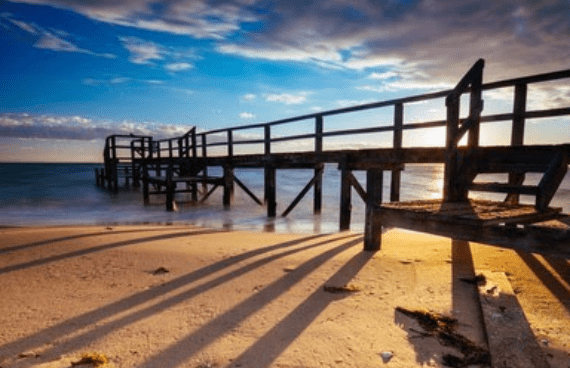
We mentioned Portsea is home to some of Melbourne’s mega-rich. Well, there’s even a walk named ‘Millionaires Walk’. This easy 1.5km walk takes you along an epic clifftop edge giving dramatic views of Port Phillip Bay and the beaches below.
However, it’s what’s on the land side that is equally as impressive, all of the massive Millionaire mansions. And wow are some of the beauties!
10. Arthurs Seat Lookout
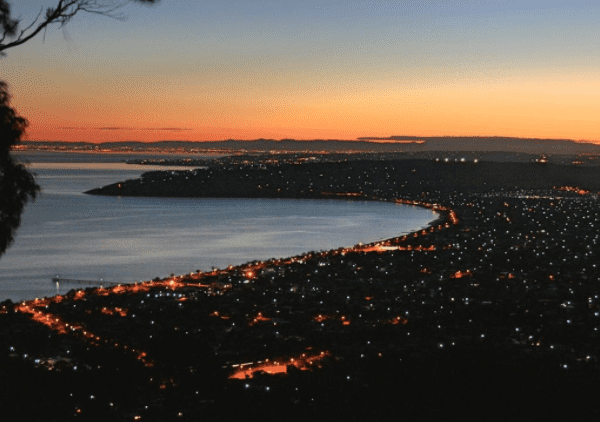
If you’re looking for the best vantage point in the region, Arthurs Seat can get you sweeping views of the entire bay. This is one of the best Mornington peninsula photography locations where photographers and travel enthusiasts meet. You’ll twist and turn up the mountain until you come across various lookout points.
At one of them, there’s a super short walk you can do to this viewing platform. You could also opt for the chairlift that goes all the way up from the bottom for an even more birds-eye experience.
These were our take on the best places in Mornington Peninsula. You can also check out the things to do in the Mornington Peninsula and the places to stay if you plan to extend your visit for a day or two.
Also check Best Places To Visit In Australia For Wildlife Enthusiasts
The post 10 Top Locations To Visit On The Mornington Peninsula appeared first on TheAussieway.
]]>
